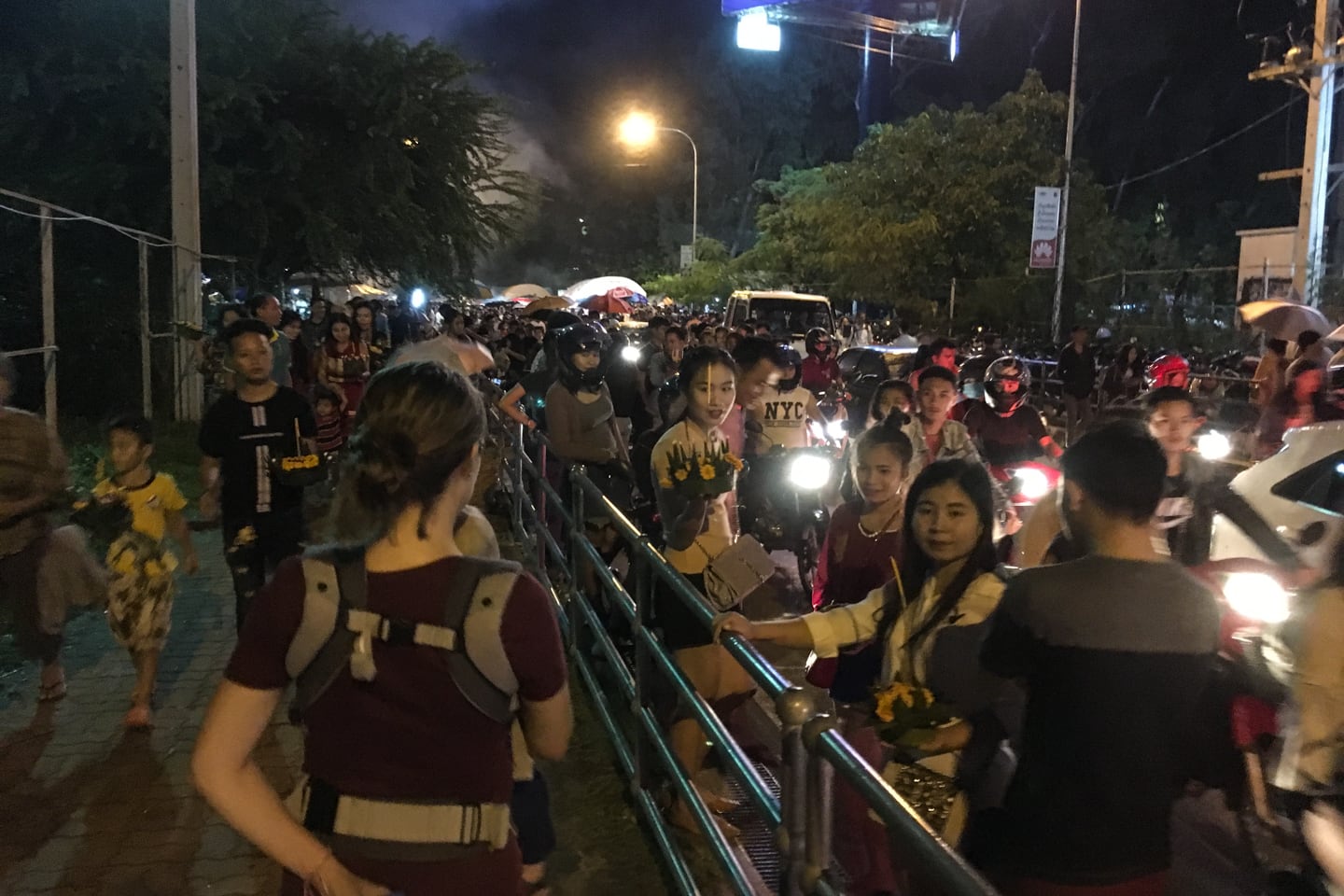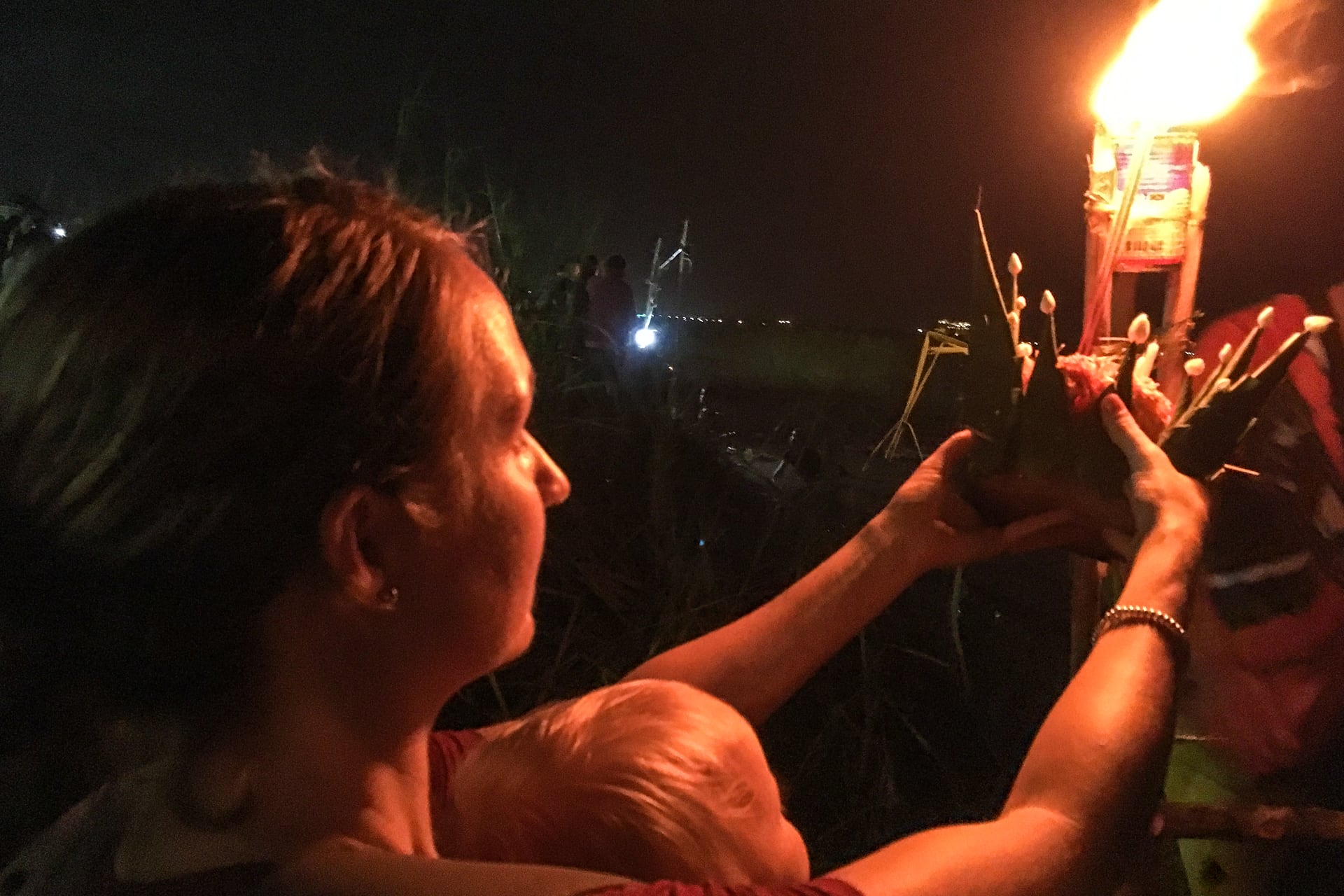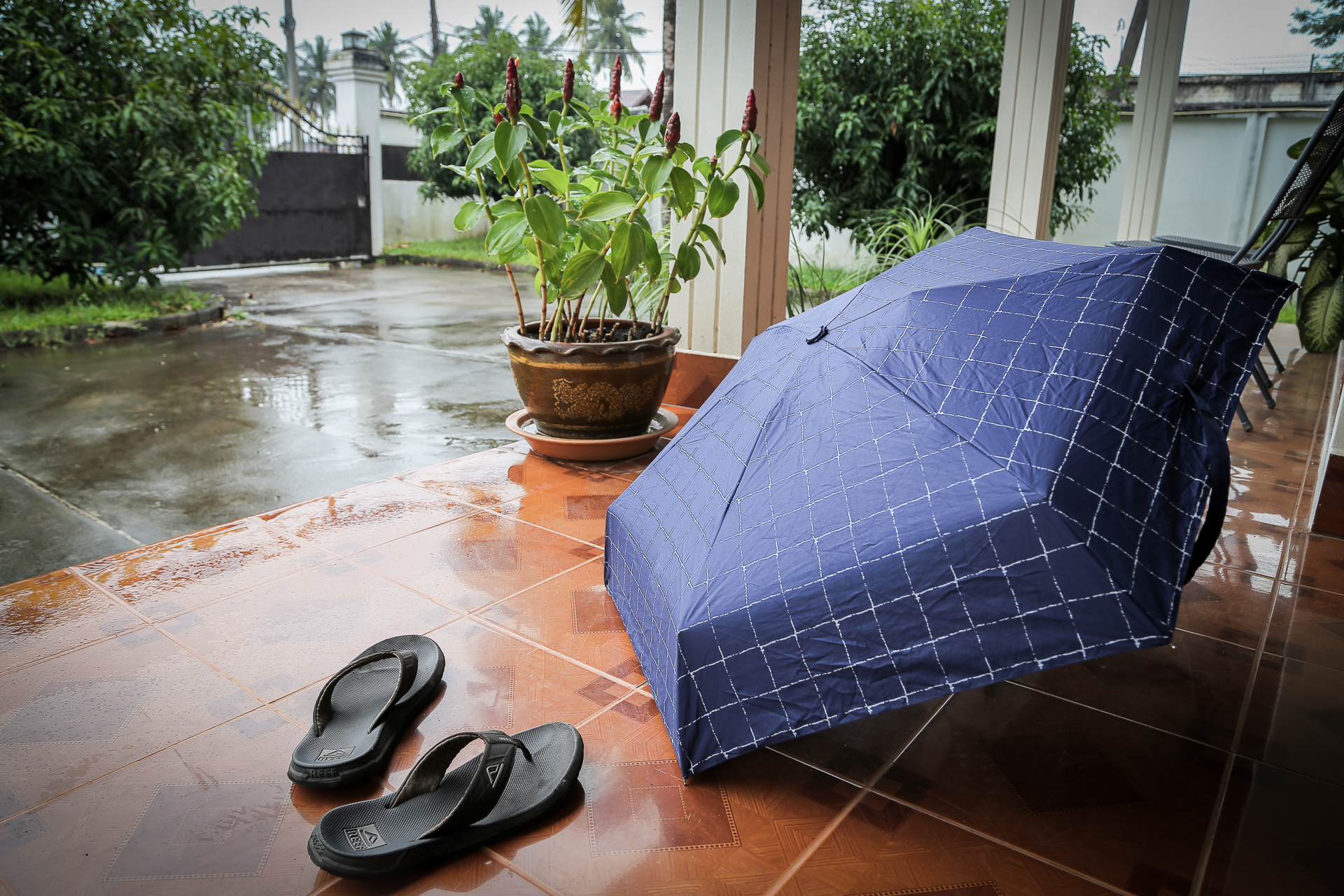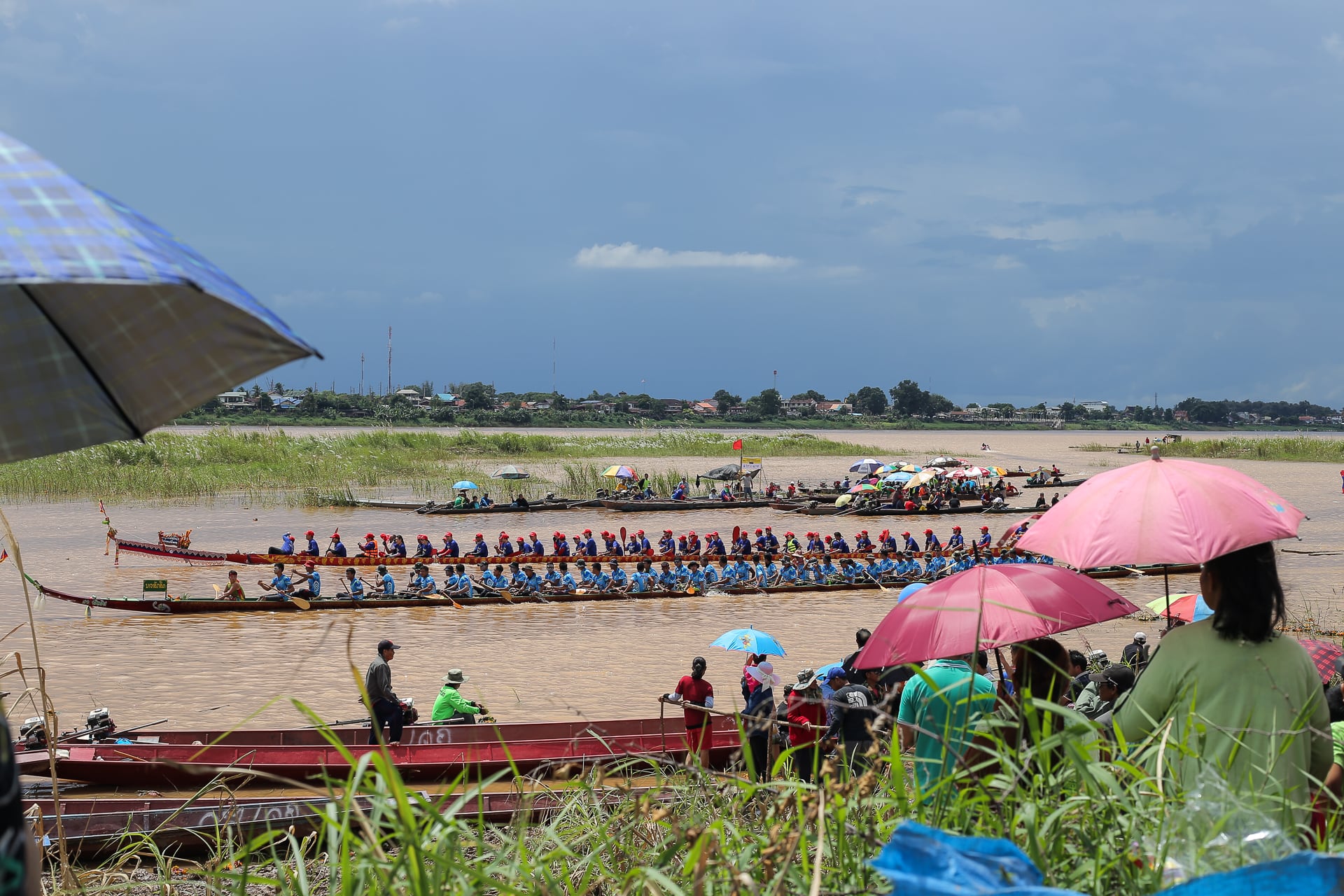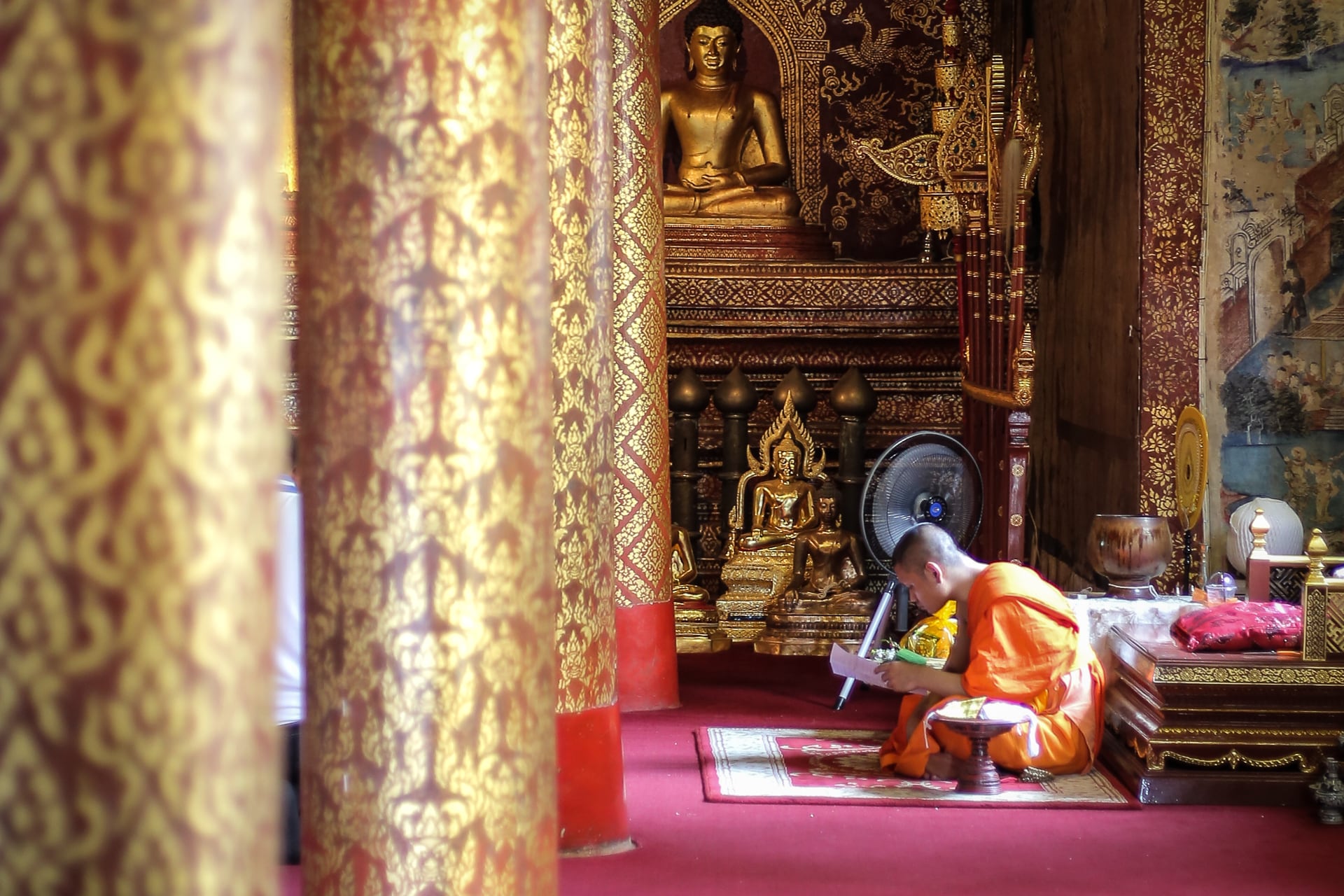It’s fortuitous that the summer months in Laos also coincide with monsoon season. After the rains of the previous year, heat steadily increases, topping out in April. In Buddhist culture, the lunar new year begins around the time people are seeking relief from these extraordinary temperatures, hence the Water Festival becoming synonymous with Lao Pi Mai. When the rains do come in May or June, they provide welcome respite, and set in motion the most significant social seasonal shift of the year.
Known by many names — Monsoon, Buddhist Lent, Rains Retreat, Green Season, Rainy season, or simply Phansa in Lao and Thai — the three month period stretching from early summer to early autumn is a time like no other in Laos, and Vientiane is no exception.
Monks retreat into monastery for lenten reflection and are forbidden to travel. Young men return to their home wats to serve as novices for one week, for spiritual reflection, but also a prerequisite for marriage and source of great pride amongst their families. Students return to their towns and villages for the long summer break, and many expats from northern regions return to their home countries to enjoy the more agreeable temperate summer months. And rice paddies transform from vast mud-filled lakes to oceans of soft, bright green.
Then, on the fifteenth day of the eleventh lunar month (October), Awk Phansa (literally meaning “Rains Retreat exit”) arrives. While Awk Phansa might be the official end to the Rainy season here in Laos, the rains this year have continued. But that didn’t stop the masses from leaving their homes tonight to head to the river.
We missed Awk Phansa and the Boat Racing Festival last year due to a work trip to Chiang Mai. Finding ourselves home for the festivities this year, we are curious to see what all the fuss is about.
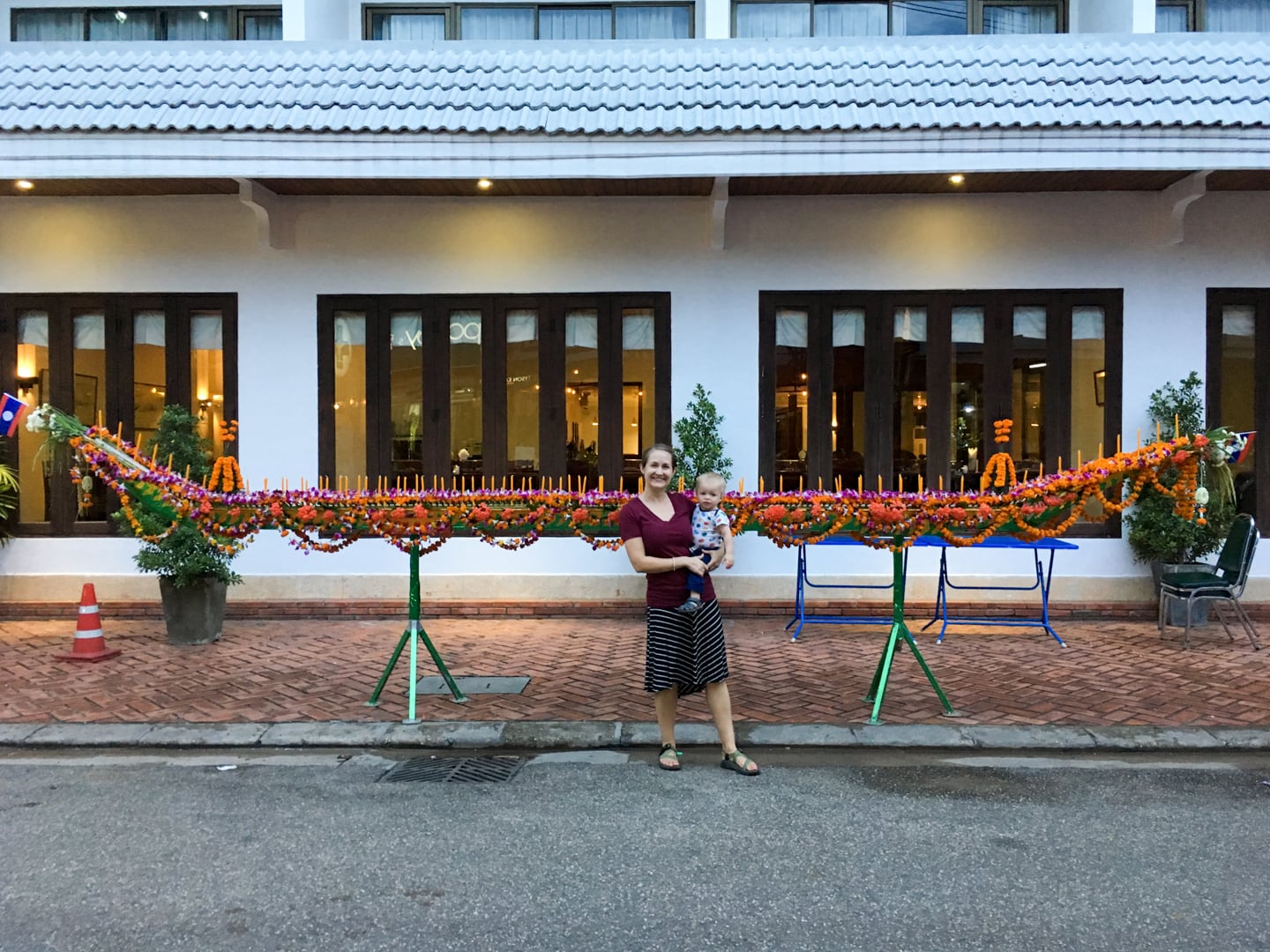
In Vientiane, the occasion is marked a bit differently than other parts of Buddhist Southeast Asia, or even other parts of Laos. The evening of the first day is similar in that hundreds of “boats” of varying sizes (one particularly large one pictured above) made of banana stems and leaves, flowers and candles are lit and sent down the river or displayed prominently on the doorsteps of houses. Residents of Vientiane, however, have taken the boat theme a step further and traditionally host a boat racing festival on the Mekong drawing thousands of spectators.
As a result of all of the festivities concentrated downtown and primarily along the water front, shops and roads are closed, and “security” is ramped up. In general, Vientiane is not known for a significant police presence. It’s a pretty easygoing city and violent crime is generally non-existent, so you won’t see policeman or police cars cruising the streets (though you will see traffic police sitting in chairs at busy intersections). On Awk Phansa, the ramped up security presence mostly consisted of lines of secondary school students forming a blockade across select streets to inspect bags and perform rudimentary pat-downs while a police officer supervises from a chair on the side walk. Unfortunately, I don’t have any photos of that, but I do have photos of Noe and a couple of large teddy bears on a motorbike.
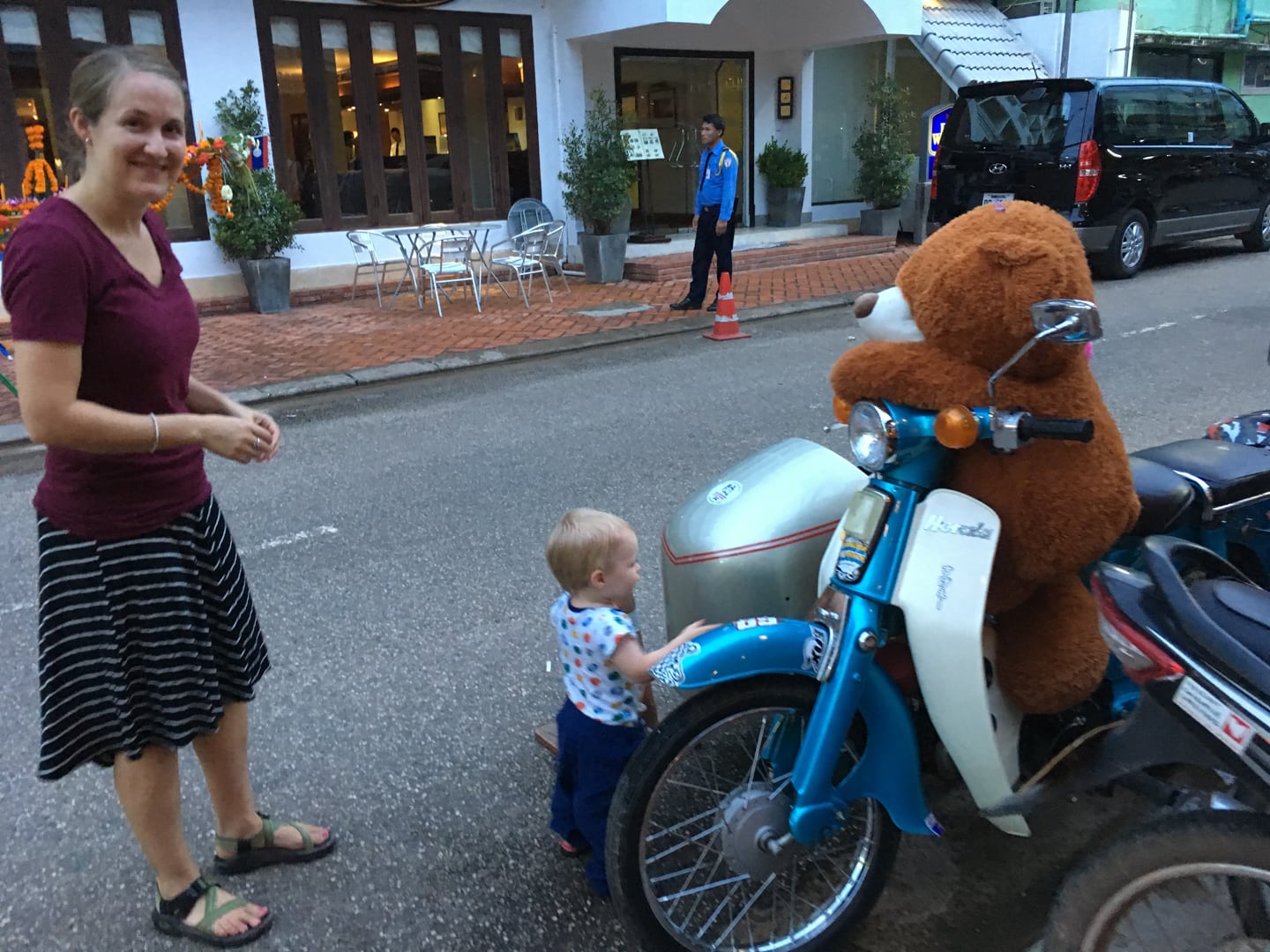
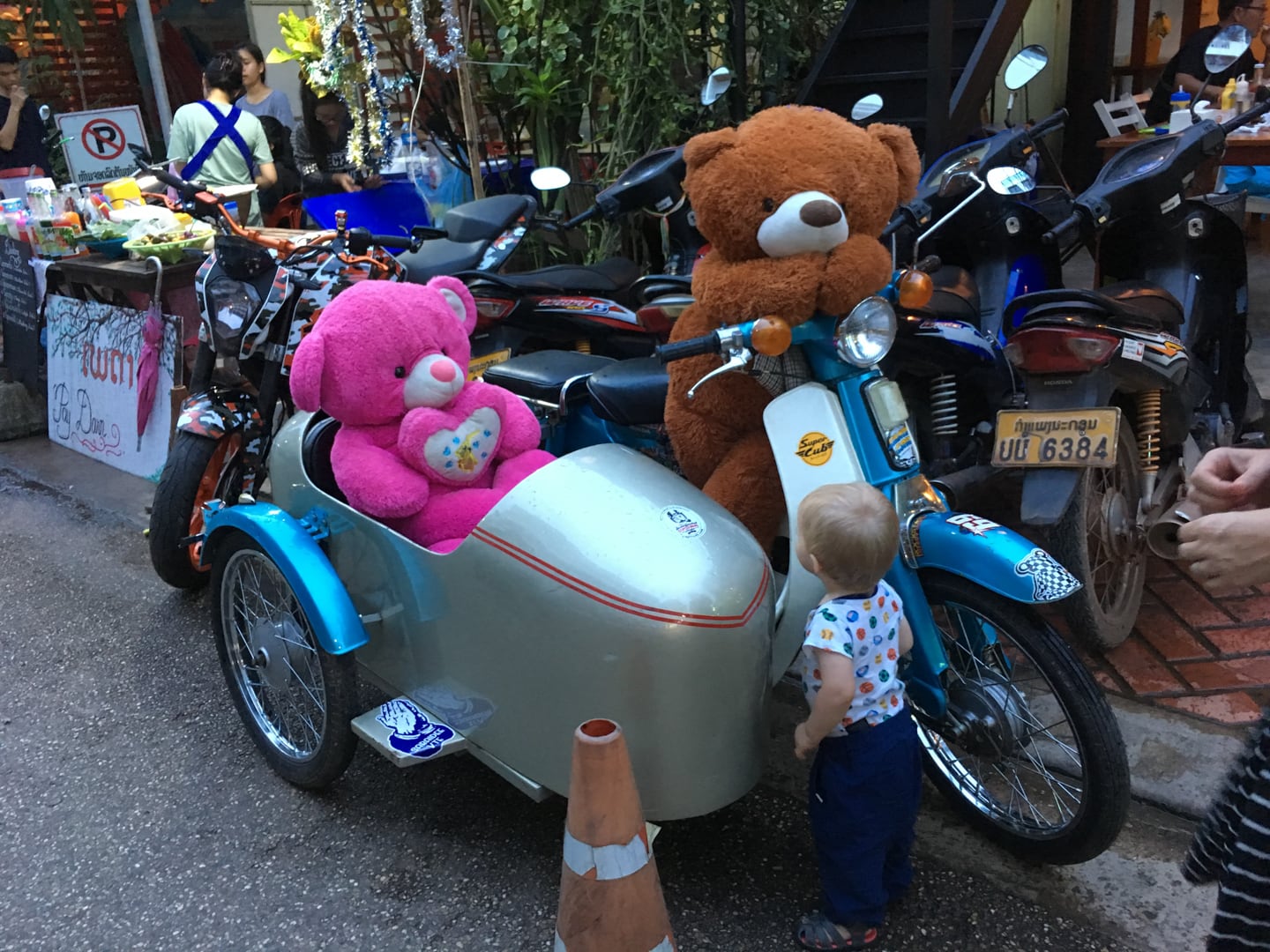
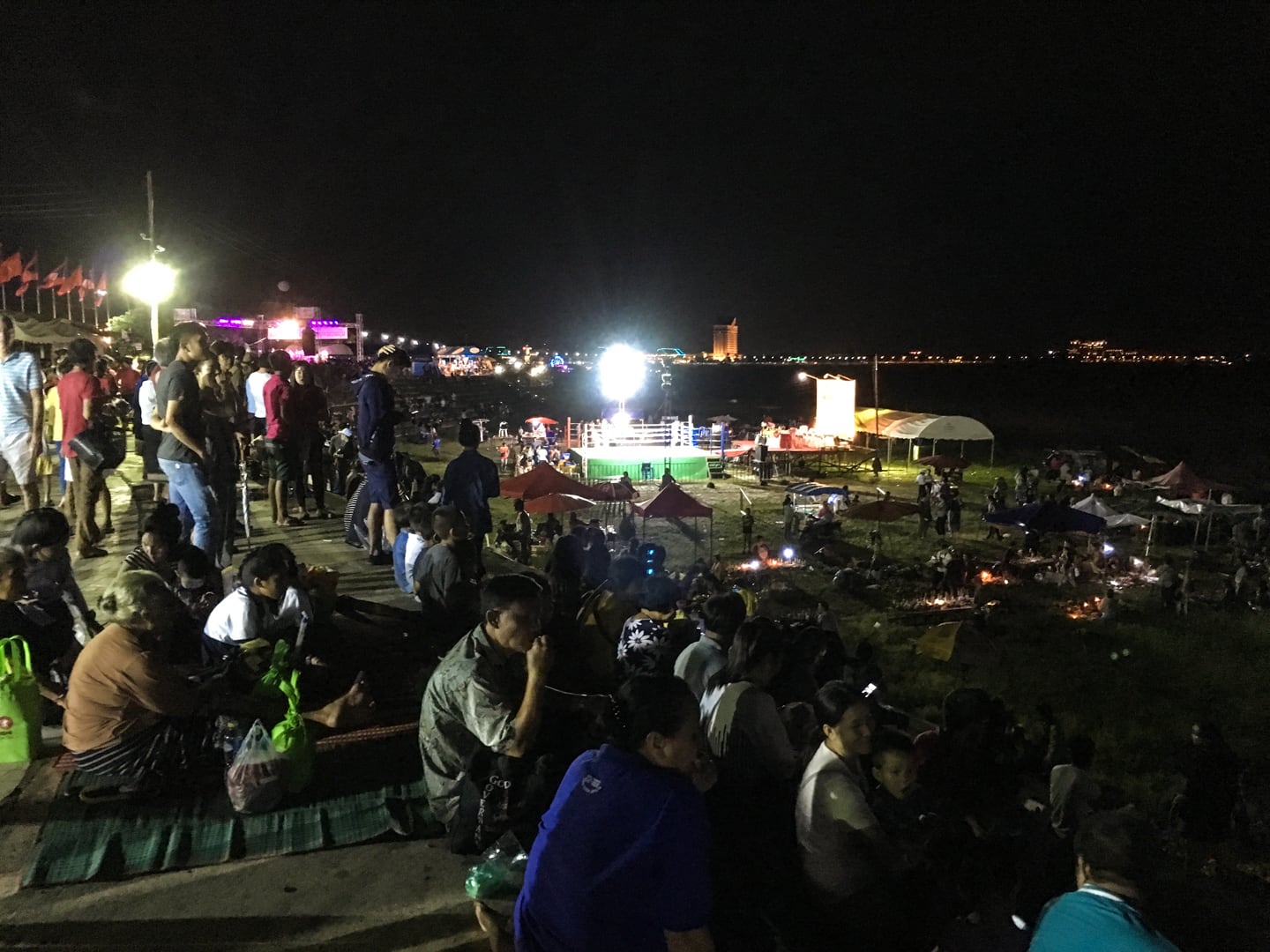
Tonight, the Mekong waterfront is awash in activity, ranging from food carts, to blessings by Buddhist nuns, to a full-on carnival with rides and even Thai boxing on the river bank.
Yet, the main attraction still remains paying respect to Mother River and showing gratitude for the rains. For that, we head down to the river’s edge…way down.
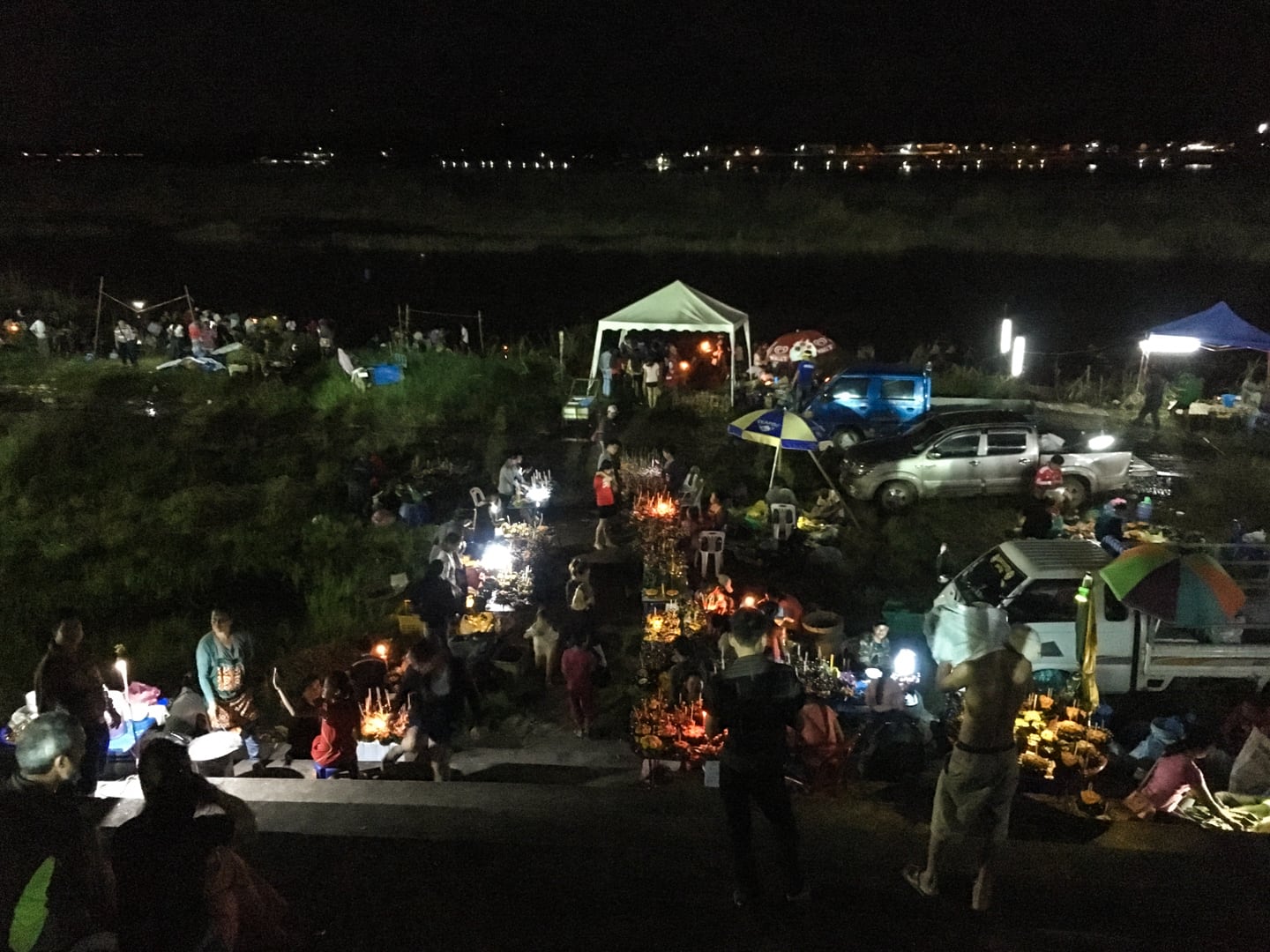

It’s customary to purchase a small candle boat (made onsite, just meters away, with biodegradable ingredients from the local area), and send it floating down the river. We look for a woman who’s getting the least amount of business at the moment and pick one out. I don’t have exact change, but thought she might be able to break a small bill given that they have been selling these all evening. But of course, what was meant to be a simple and heartwarming transaction becomes an awkward cross-cultural misunderstanding in which another woman who appears to be the boss comes over, tries to look through my wallet in the dark while I still have it open (presumably for exact change that I, as a stupid falang, had overlooked) and spouting a lot of Lao that we don’t recognize. A number of different bills are exchanged (e.g. if you give me a 5,000 + a 2,000 and I give you a 10,000 + 3x 1,000s, then that might work…oh wait, we’re still 7,000 over, let’s try…), not exactly laying the groundwork for spiritual centering and meditation, but such is Laos.

When the transaction is finally complete, with boat in hand, we make our way slowly and steadily down toward the water.
We arrive at a canopy where we are each required to pay a small fee to access the river (again, not laying the groundwork for a zen experience, but somebody’s got to pay for all this, I guess). From there, we inch our way down a long and slippery reed mat walkway to the river, with the aid of a rickety stick rail.
As we approach the water, three things surprise me. One, at the height of the rains, the river seems quite high from above but the water’s surface is actually much lower than I had thought. At this point, we are still a good 30-50 feet (9-15 meters) below the top of the river wall. Two, the swollen river is also surprisingly calm here, likely due to not being on the main portion of the river but on a small offshoot separated from the main channel by what’s left of Don Chan [island]. And finally, I’m surprised to see so many heads popping out of the dark water around us. It seems that some enterprising local youth are making a small businesses offering to float your boat out and away from shore for a small fee. I’m uncertain as to the advantage of this–perhaps it beefs up your merit, or maybe it’s purely for aesthetic reasons or to make the whole experience seem more fulfilling in some way.
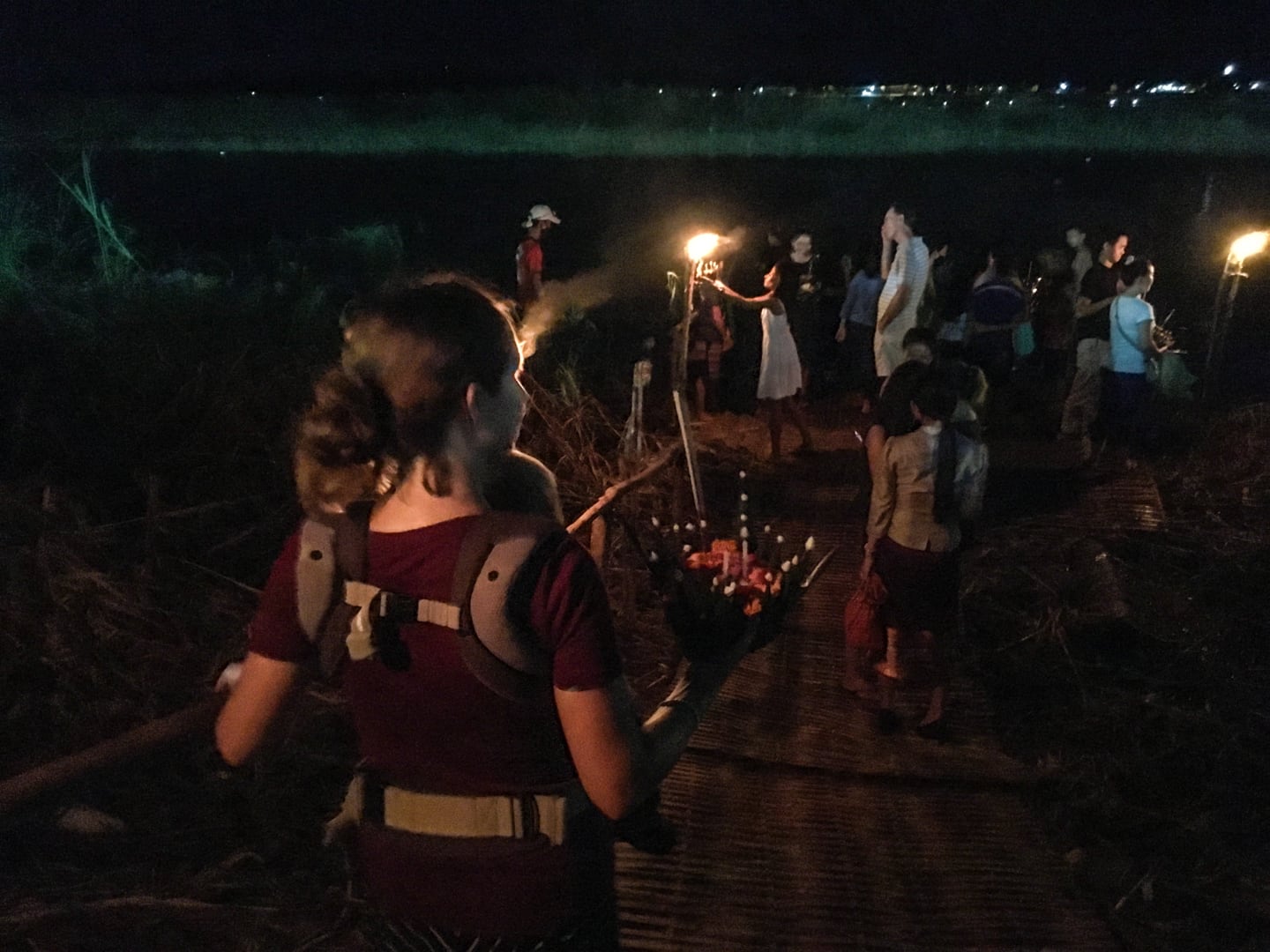
About half way down, we pause to watch a few others to get a sense of what we were supposed to be doing with our boat. Each person approaches one of the tiki torches lining the walkway with their boat, lights the candles and incense and continues down to the water, where they lovingly place their boat on the surface of the Mekong (or pay one of the kids to take it out for them). “Simple enough,” we’re thinking.
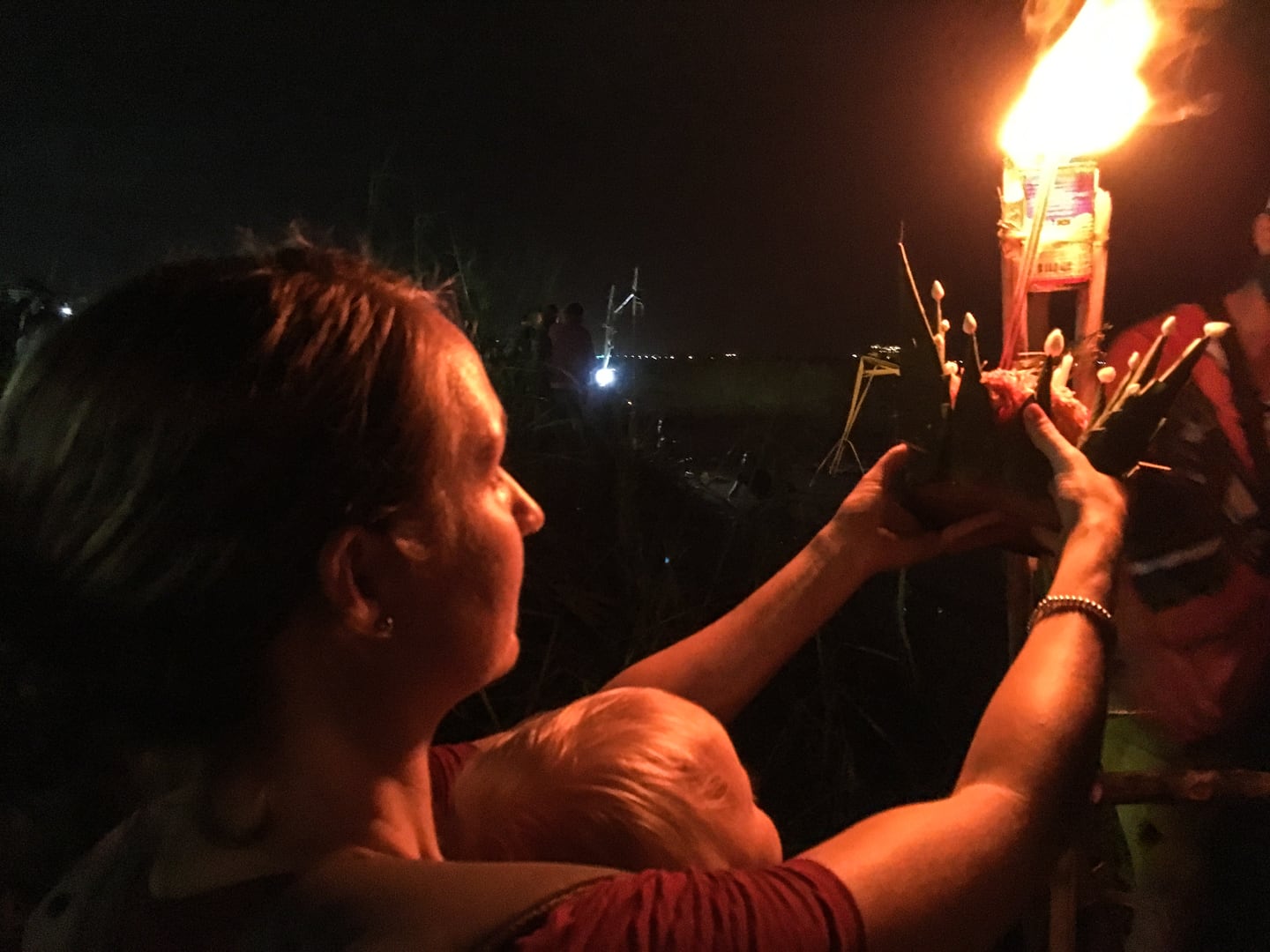
We approach a tiki and for the next several minutes attempt to light–and keep lit–our poor little boat. A steady breeze is blowing, making it virtually impossible to get a good light. Guarding the candles from the breeze do nothing.
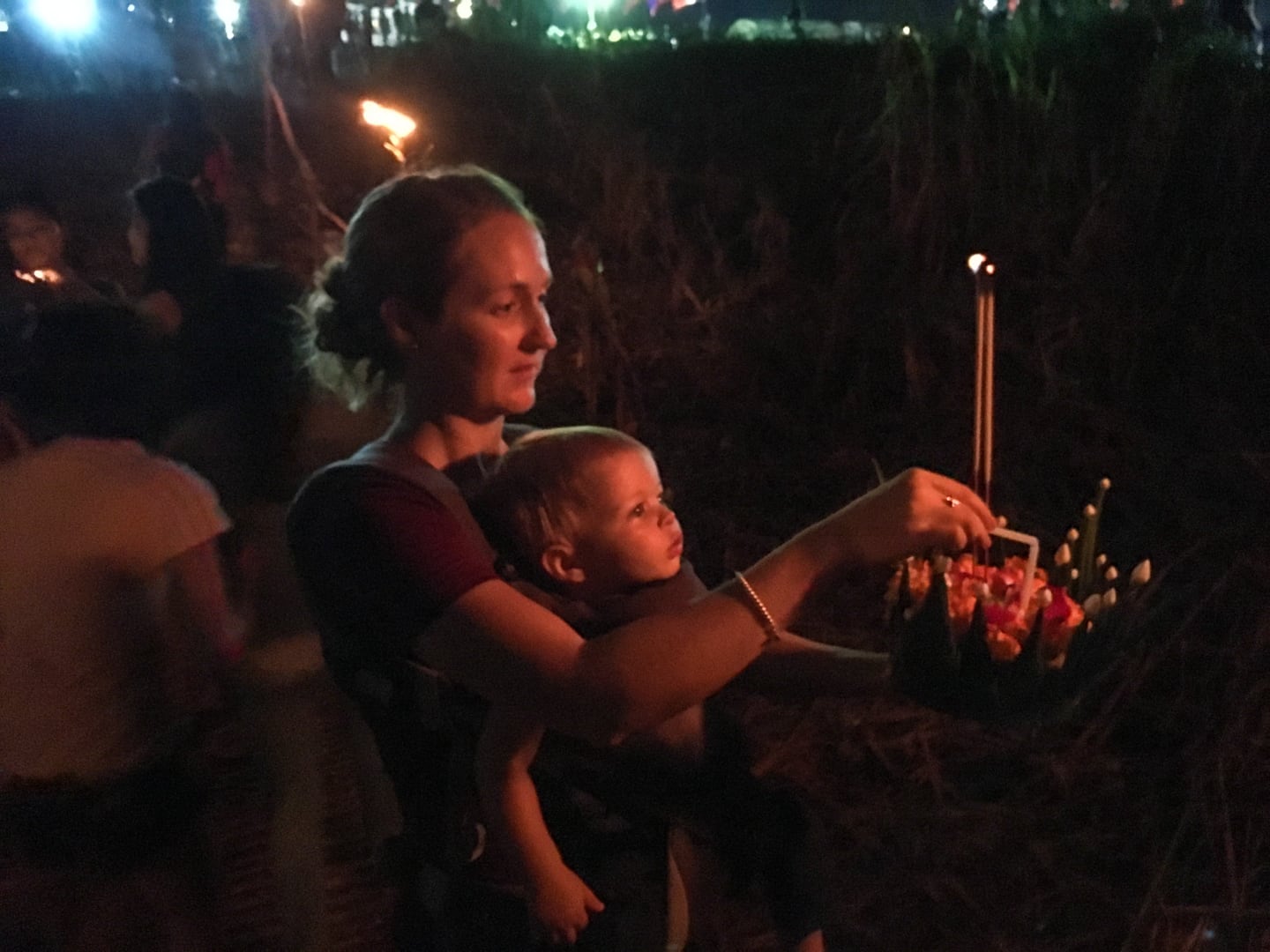
Finally, I put the camera down and proceed to light the living heck out of the incense and candles. Then, I wait for the breeze to die down, quickly scurry over to the edge of the walkway, and as carefully as possible, plop the thing on the water and give it a gentle push into the darkness.
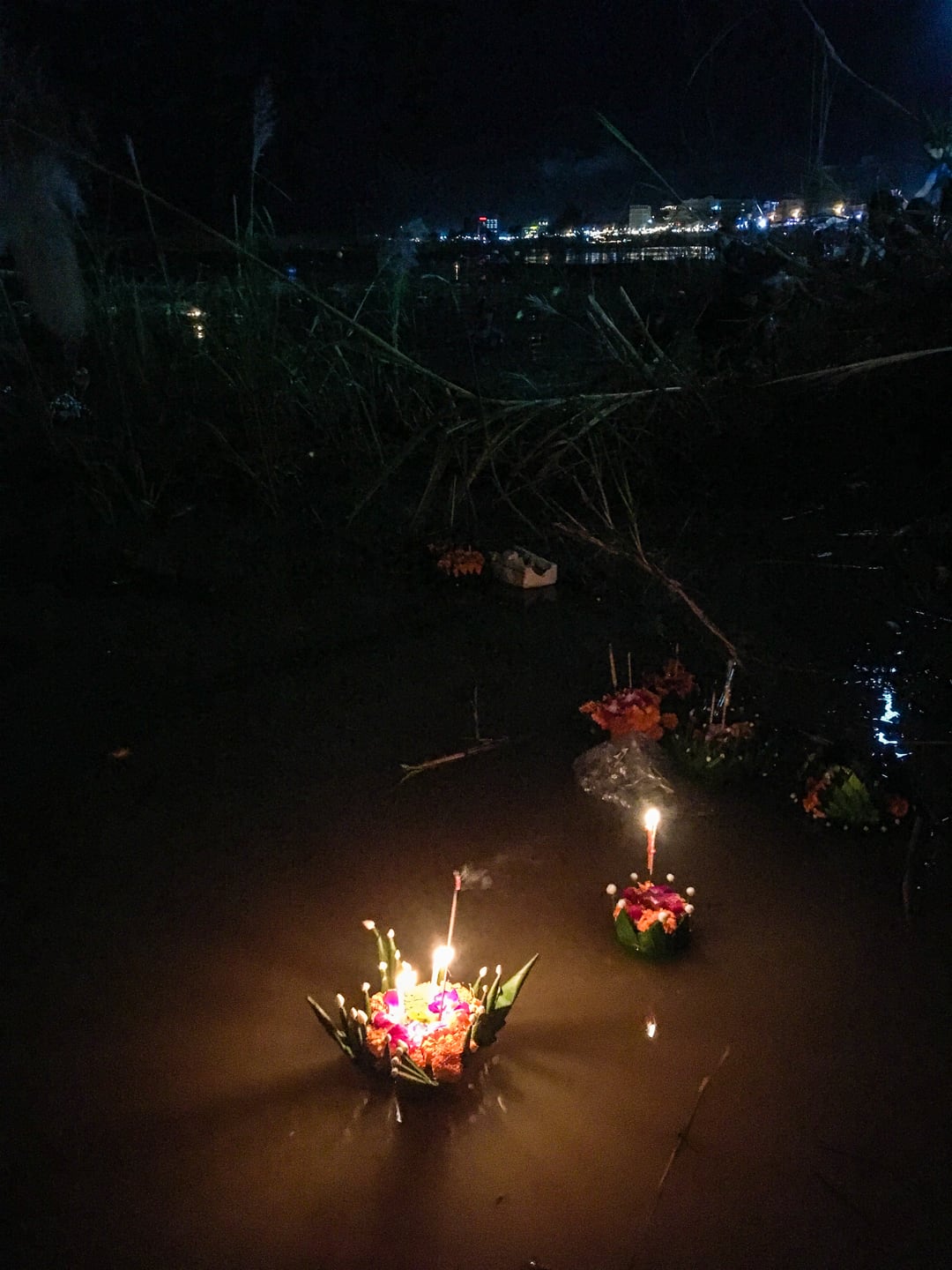
There seem to be a couple of different reasons why this particular ritual is practiced in Laos. Some do it to show respect to Buddha and gratitude to the Mother of Rivers. Still, others send the lighted boats down the river as sort of a request for a blessing or to float bad luck of the past year away, which in turn, allows good luck to flow in. Those who don’t live near the river (such as our Lao neighbors) construct model boats decorated with candles and flowers, and in fact, we see many of these lit up on the doorsteps of homes returning from our night out.
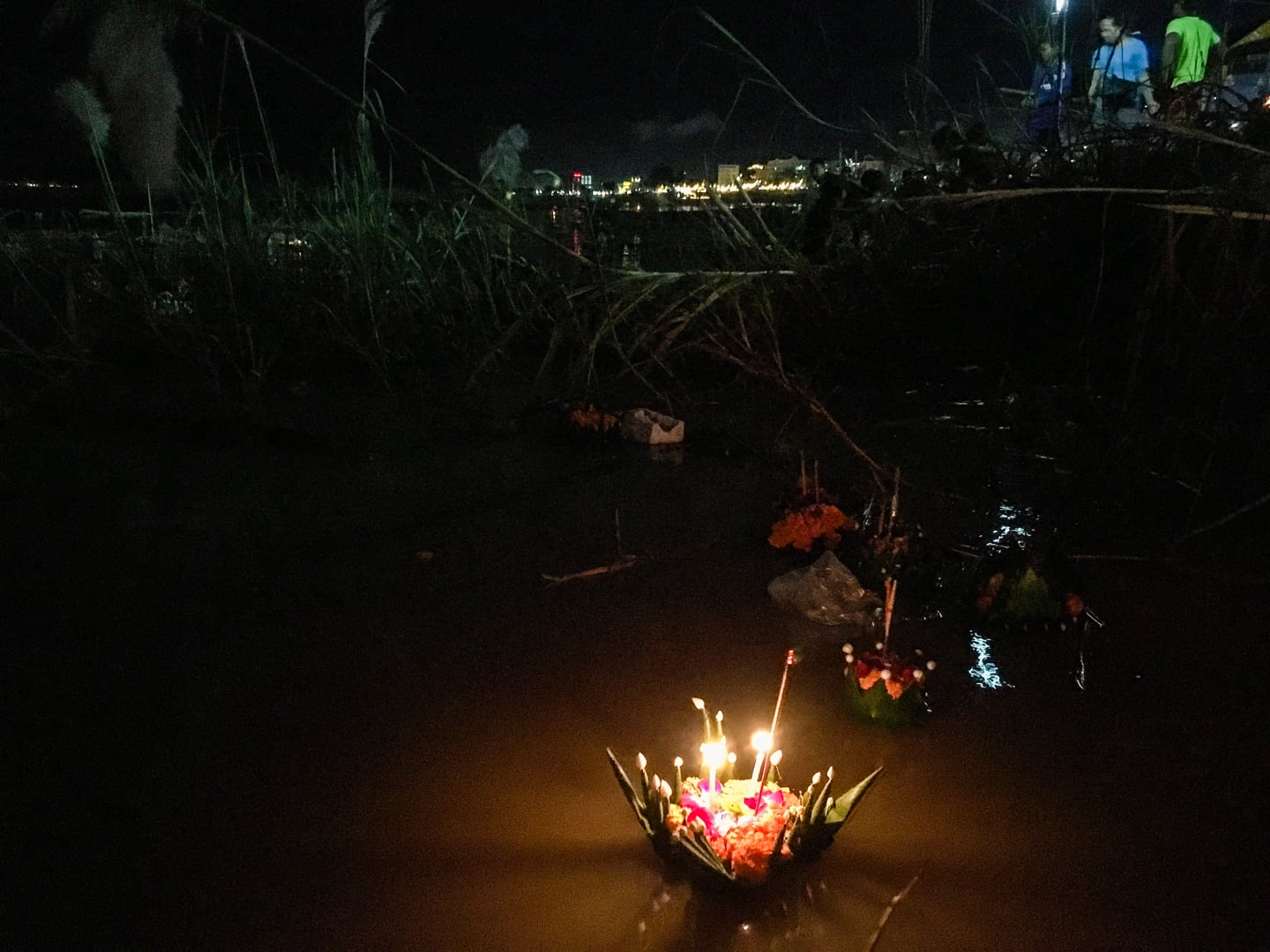
To our utter amazement, minutes later our tiny banana-leaf boat (left-foreground) not only stays alight, but brightens in the breeze, as we watch it slowly wobble away from the river bank. Thanks Mother River. Thanks Rains. Now, bring on the dry season, already! (and good luck is always welcome too).
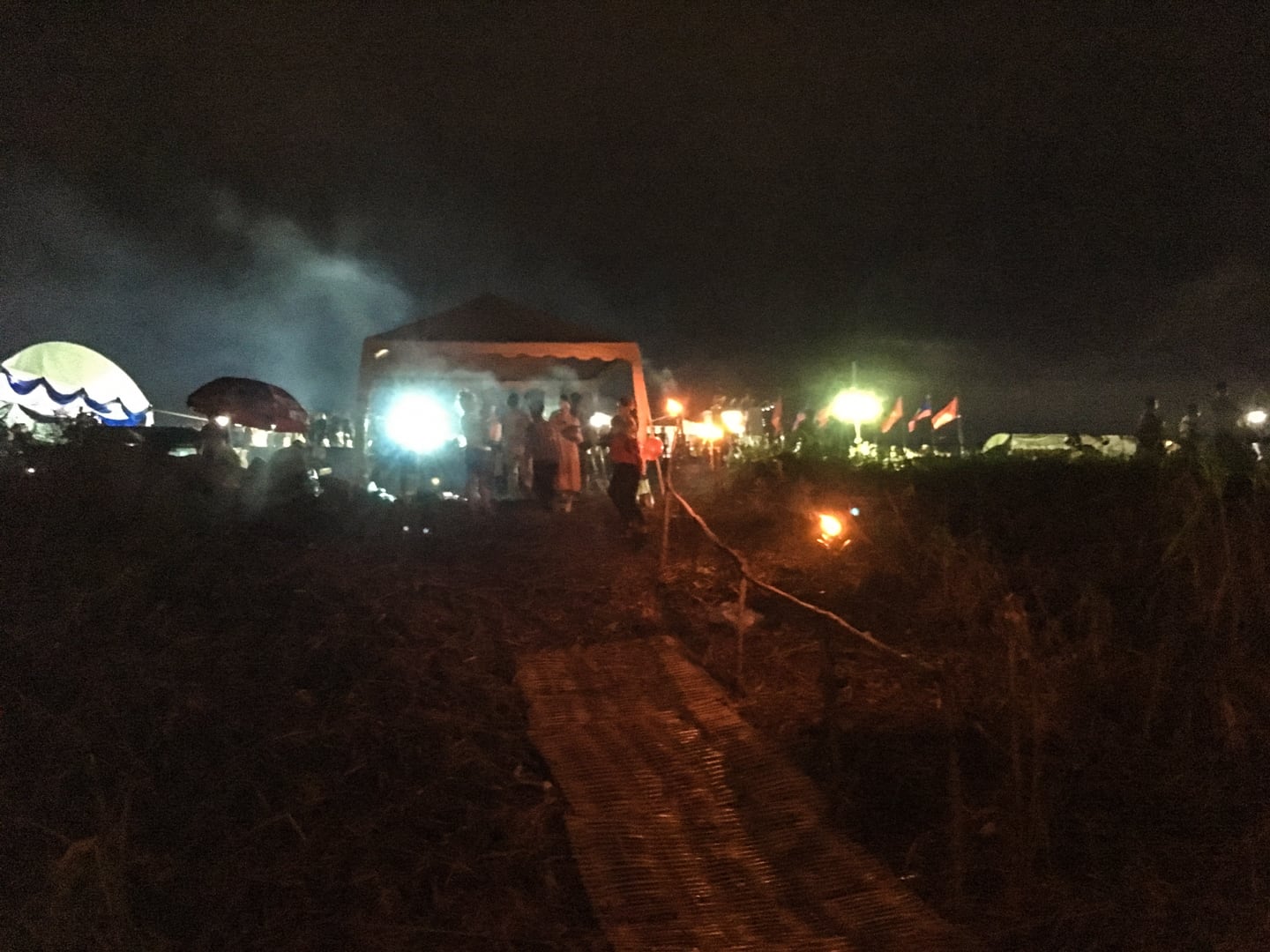
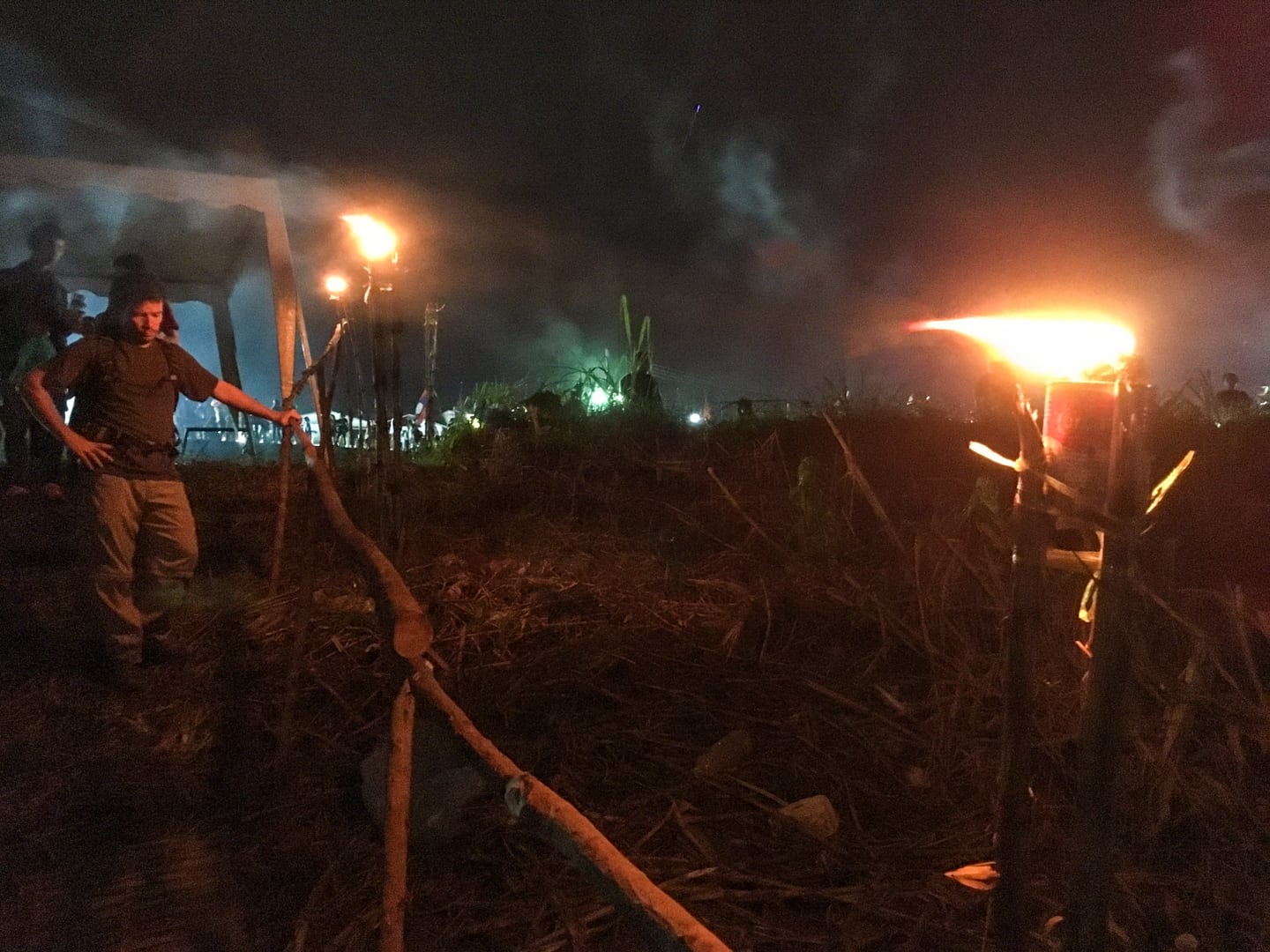
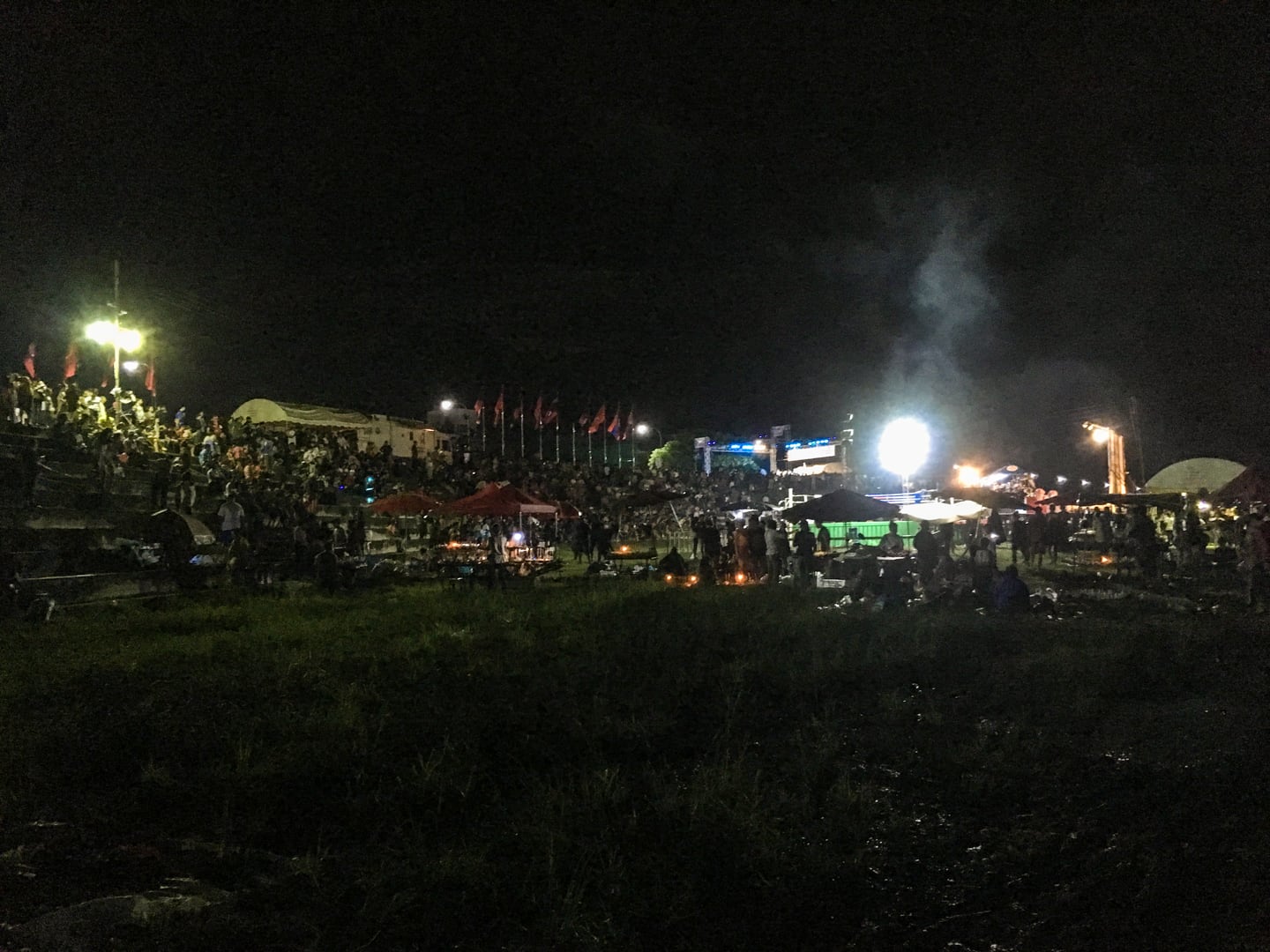
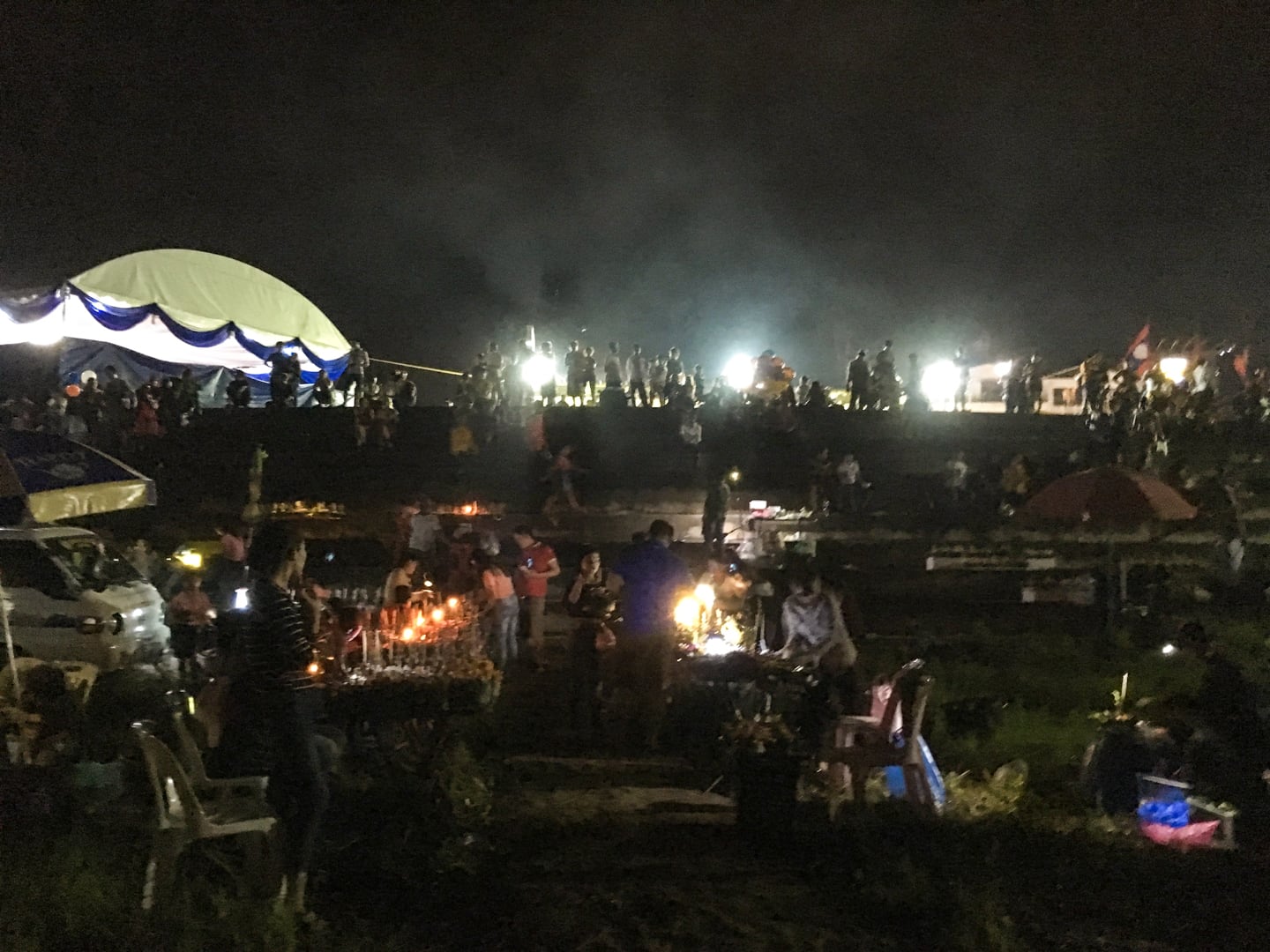
We make our climb slowly back to street level, then take a walk along the promenade. It’s a rare occasion these days for us to be out after dark, and Noe is enjoying taking in everything, so we continue on, soaking up the evening activities.
In recent months, Noe’s bed time has become much more solidified. We try to get him in bed at 7pm, lest he turn into a raging pumpkin. We’ve enjoyed the quiet time at home after he goes down, but miss being out and about at that hour, particularly given that we live in the tropics and the evening hours are some of the best hours to be out in the world, when all the locals are out enjoying themselves and the relative cool of the evening. Needless to say, this is a big treat for us.
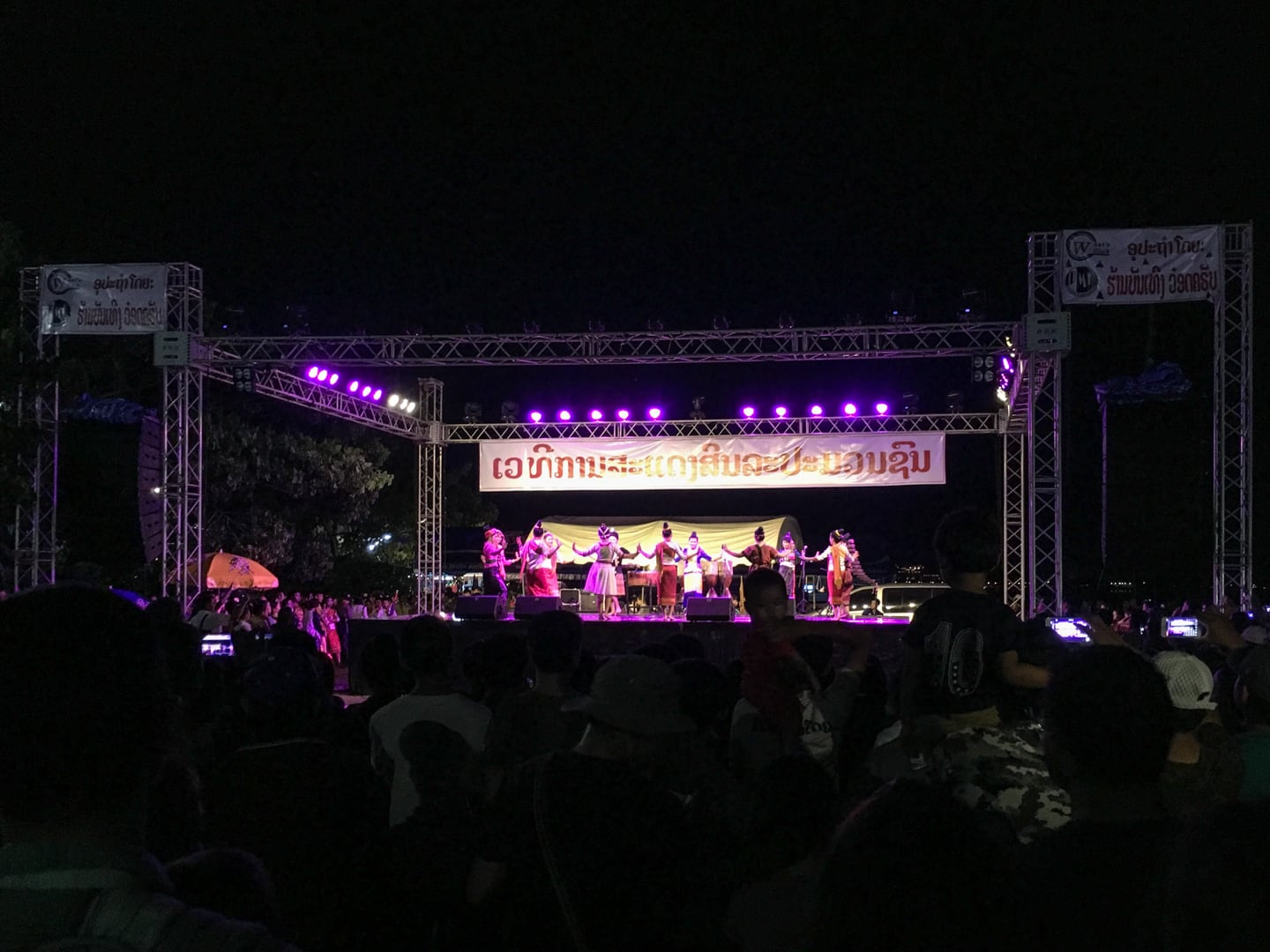
We stop for a while at a soundstage to watch some traditional dance. It’s hard to pull Noe away, he is absolutely transfixed (as usual — he loves music, particularly live music and performances perhaps more than anything else).
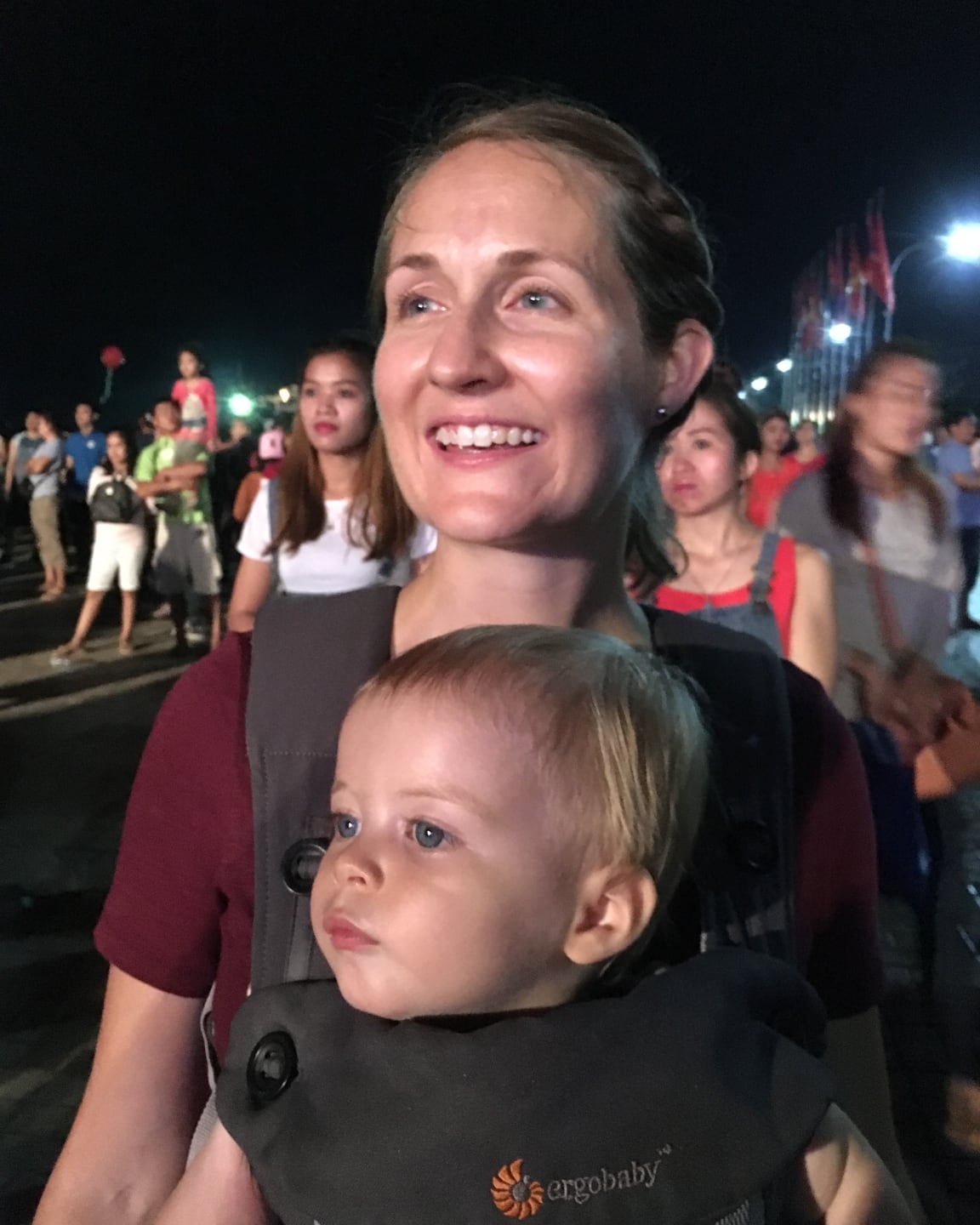
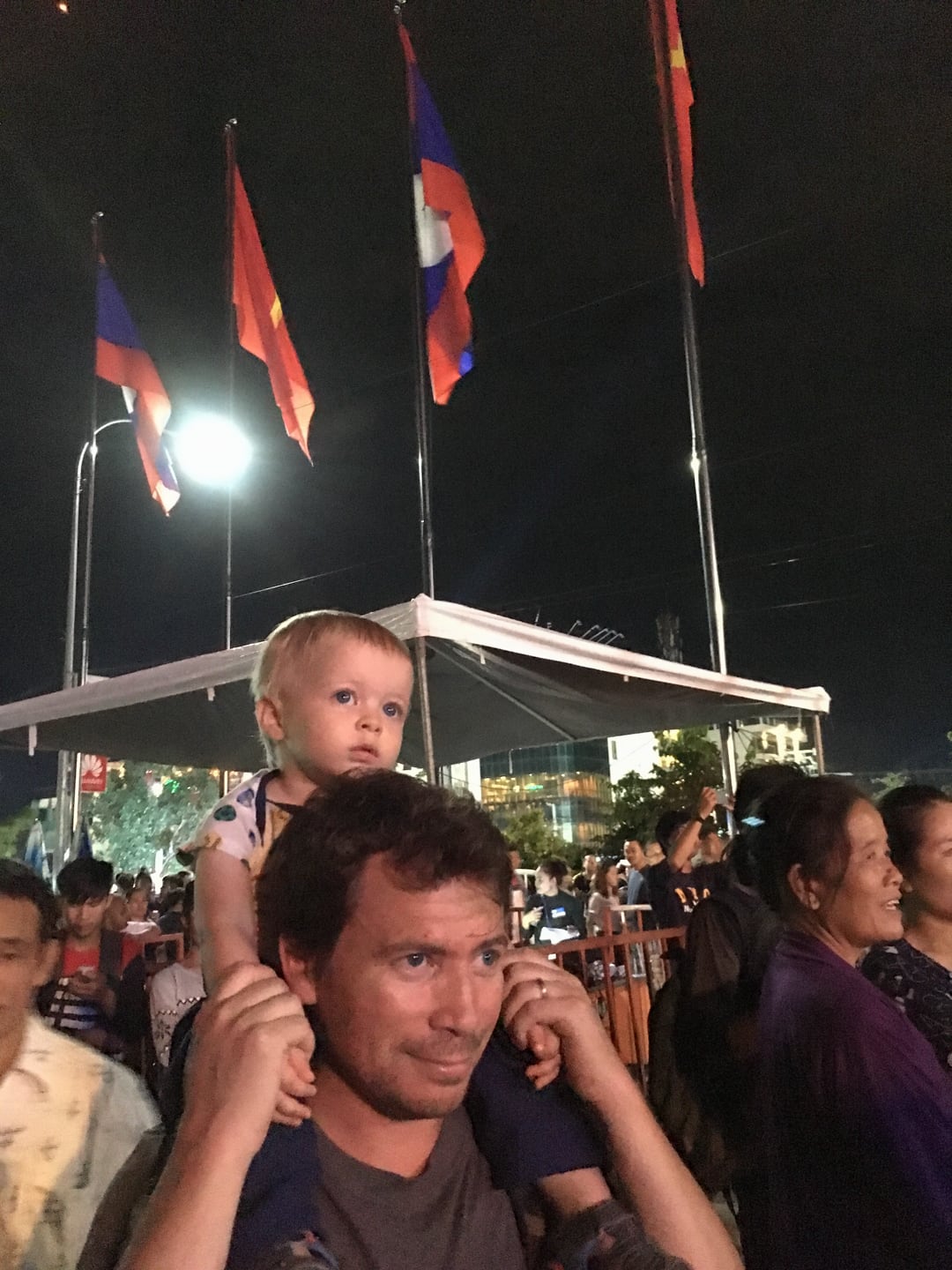
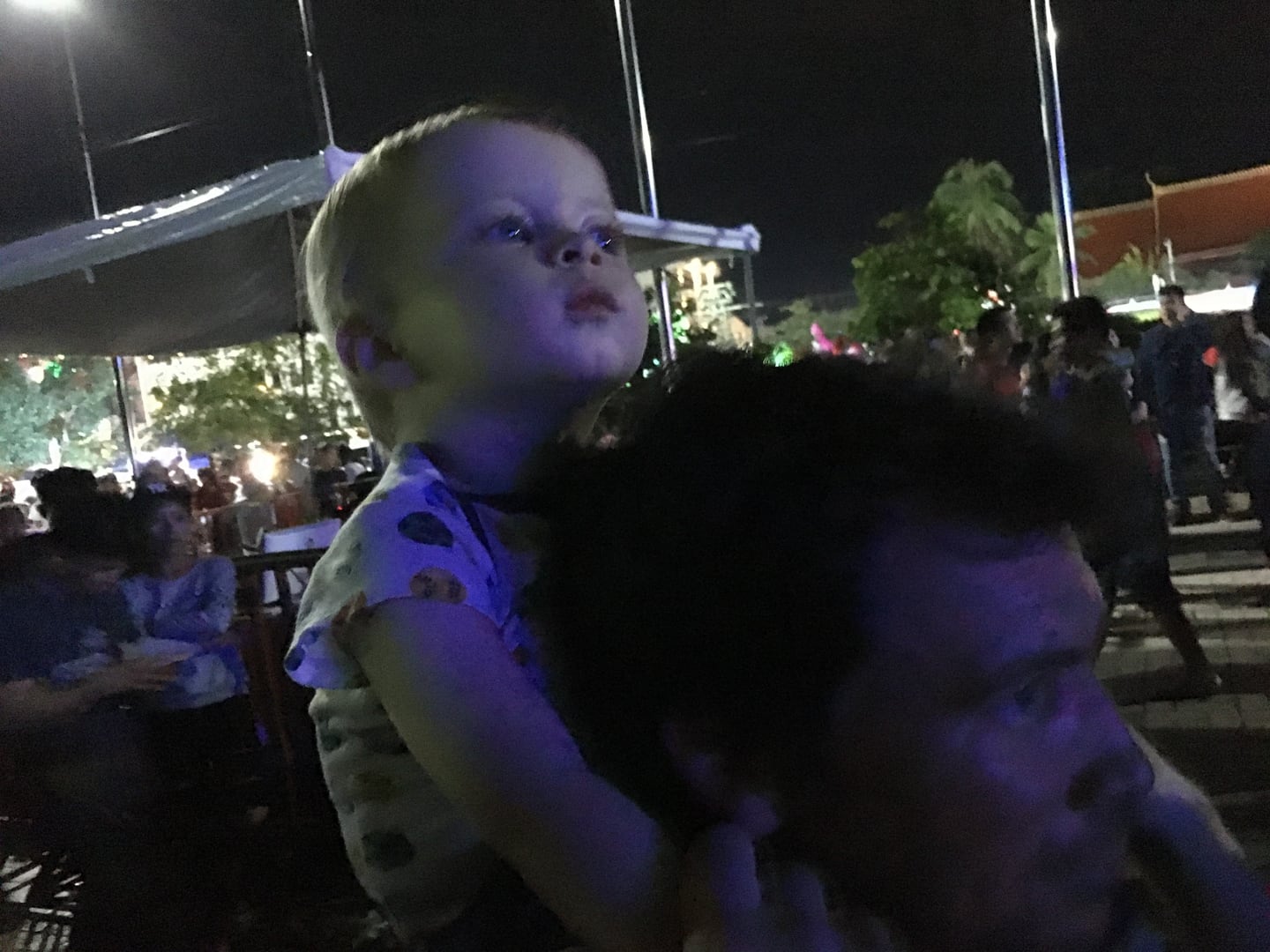
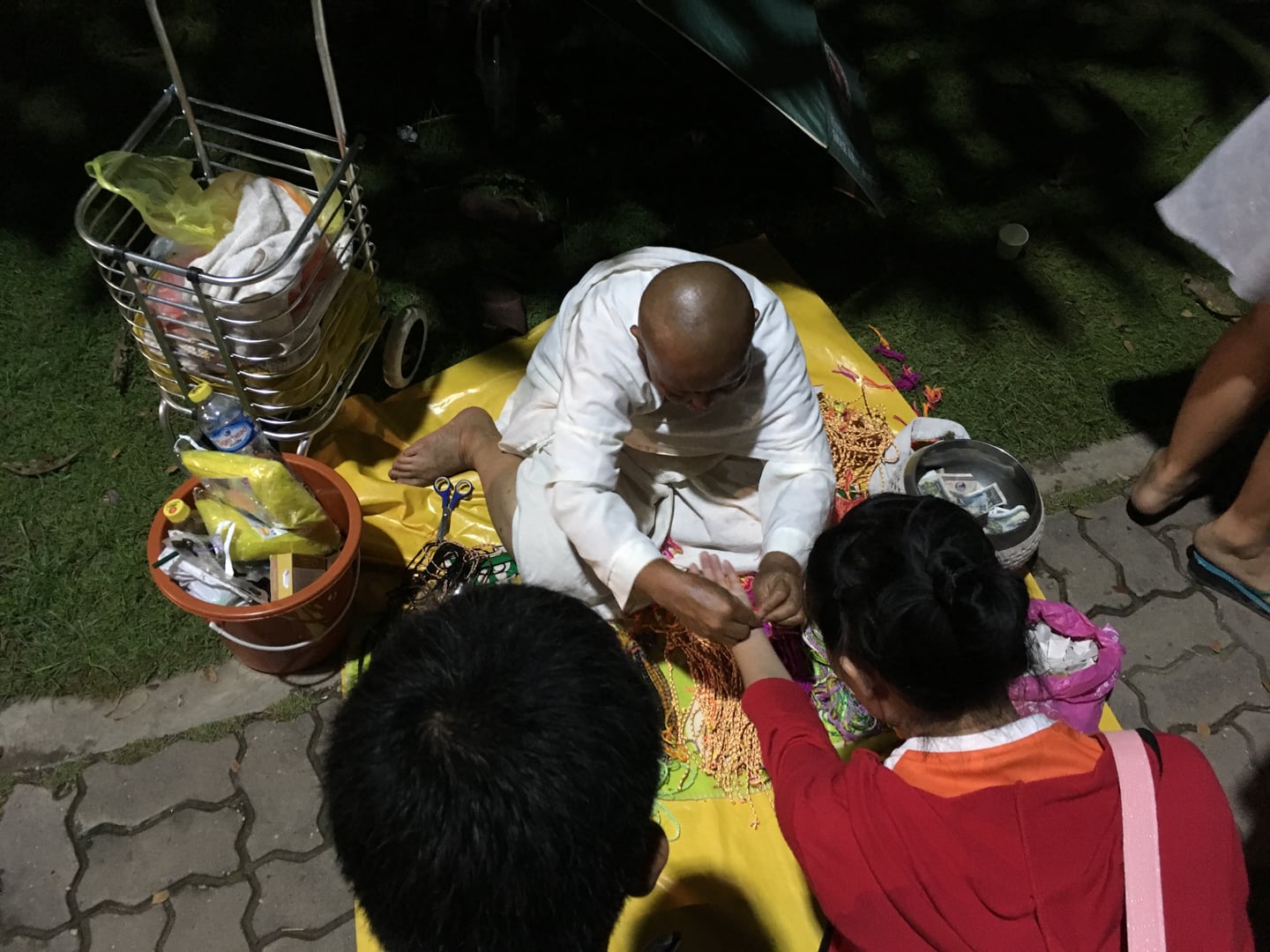
At one point along the promenade there are Buddhist nuns offering blessings and bracelets. Lori can’t resist. A pink bracelet, nonetheless!
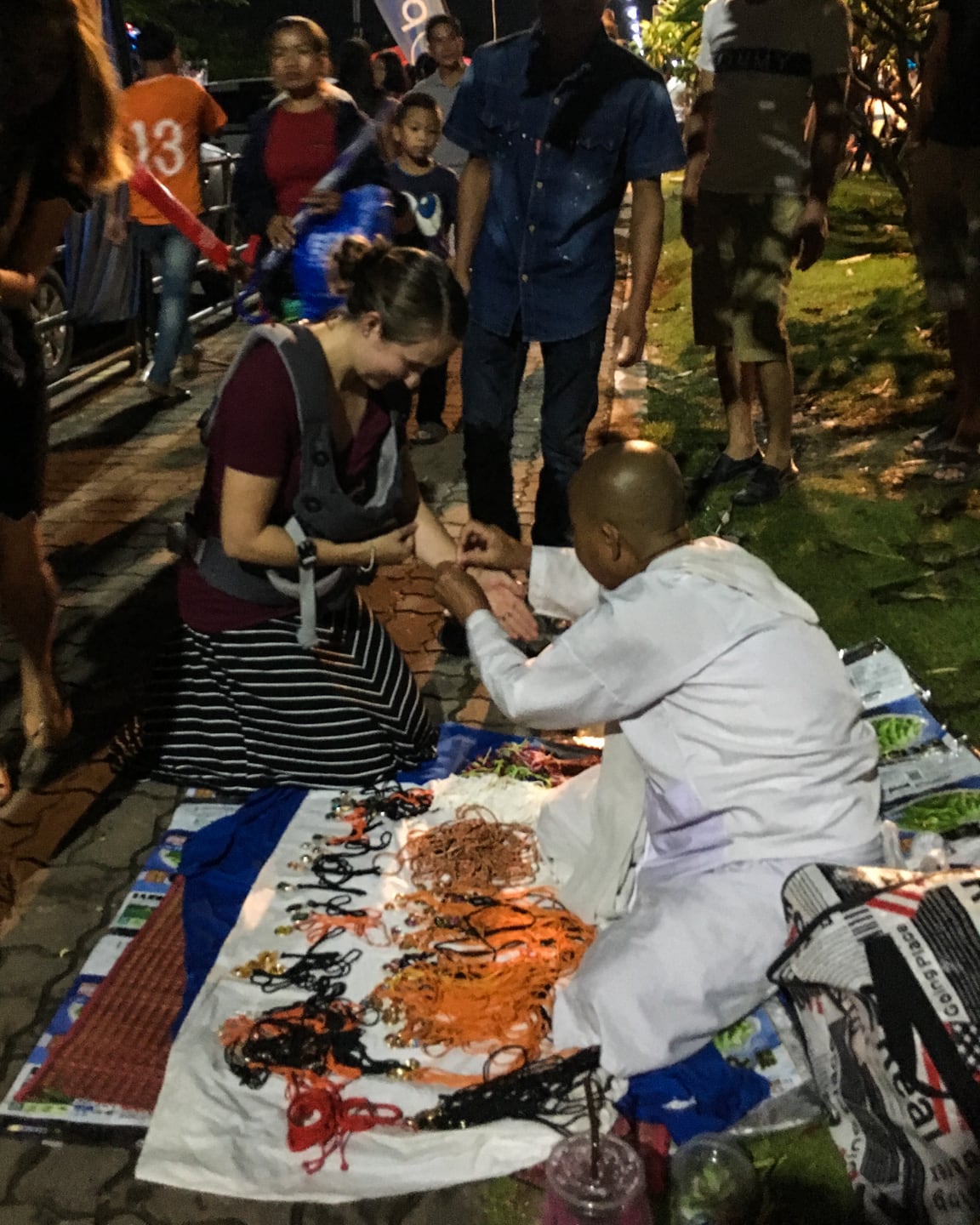
We make it to the Chao Anouvong statute and suddenly the fog rolls in…
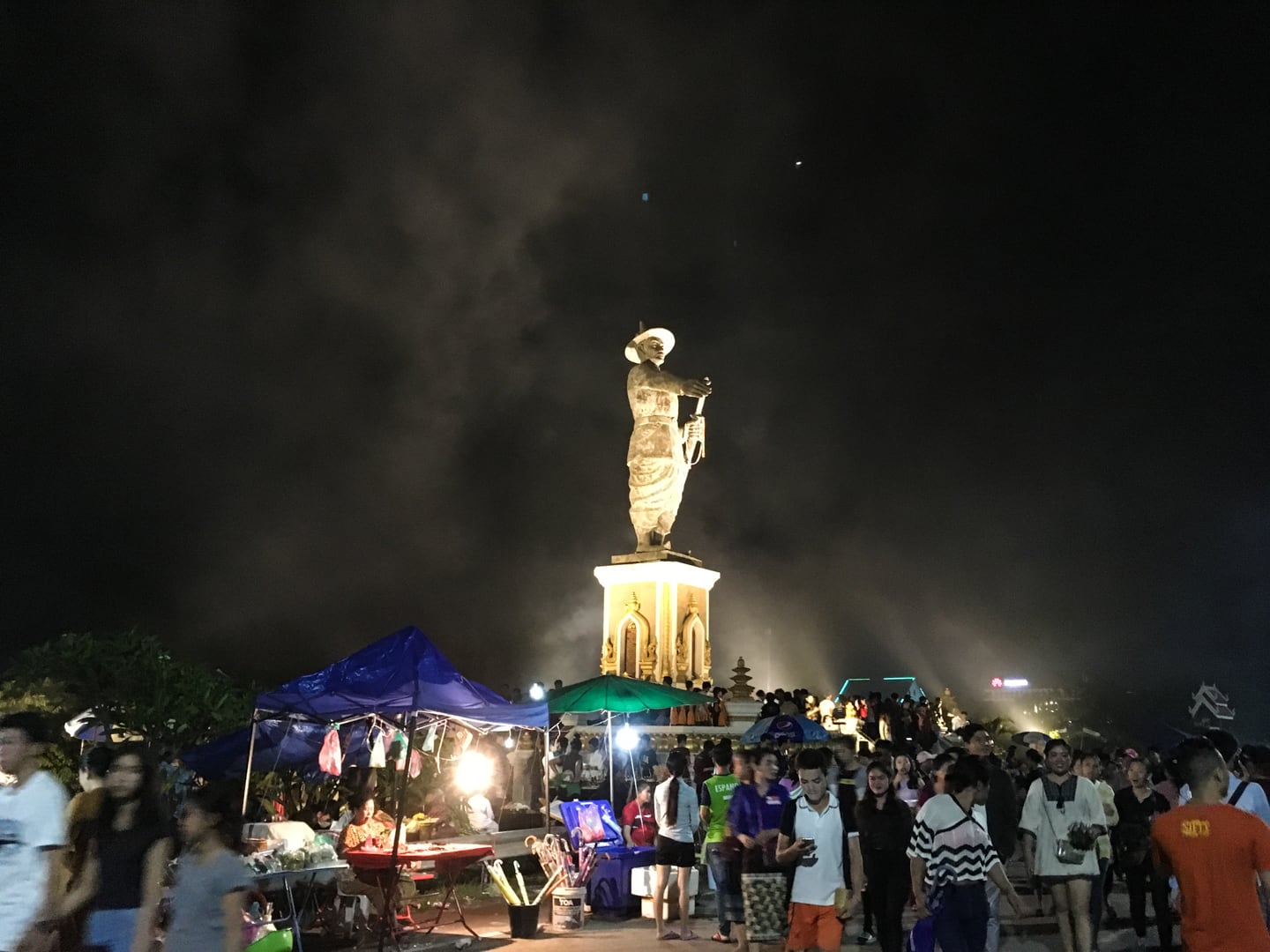
The “fog” here is actually the smoke from the dozens of meat grilling carts surrounding ol’ Anouvong. On the other side of the path, a carnival had sprung up, literally over night.
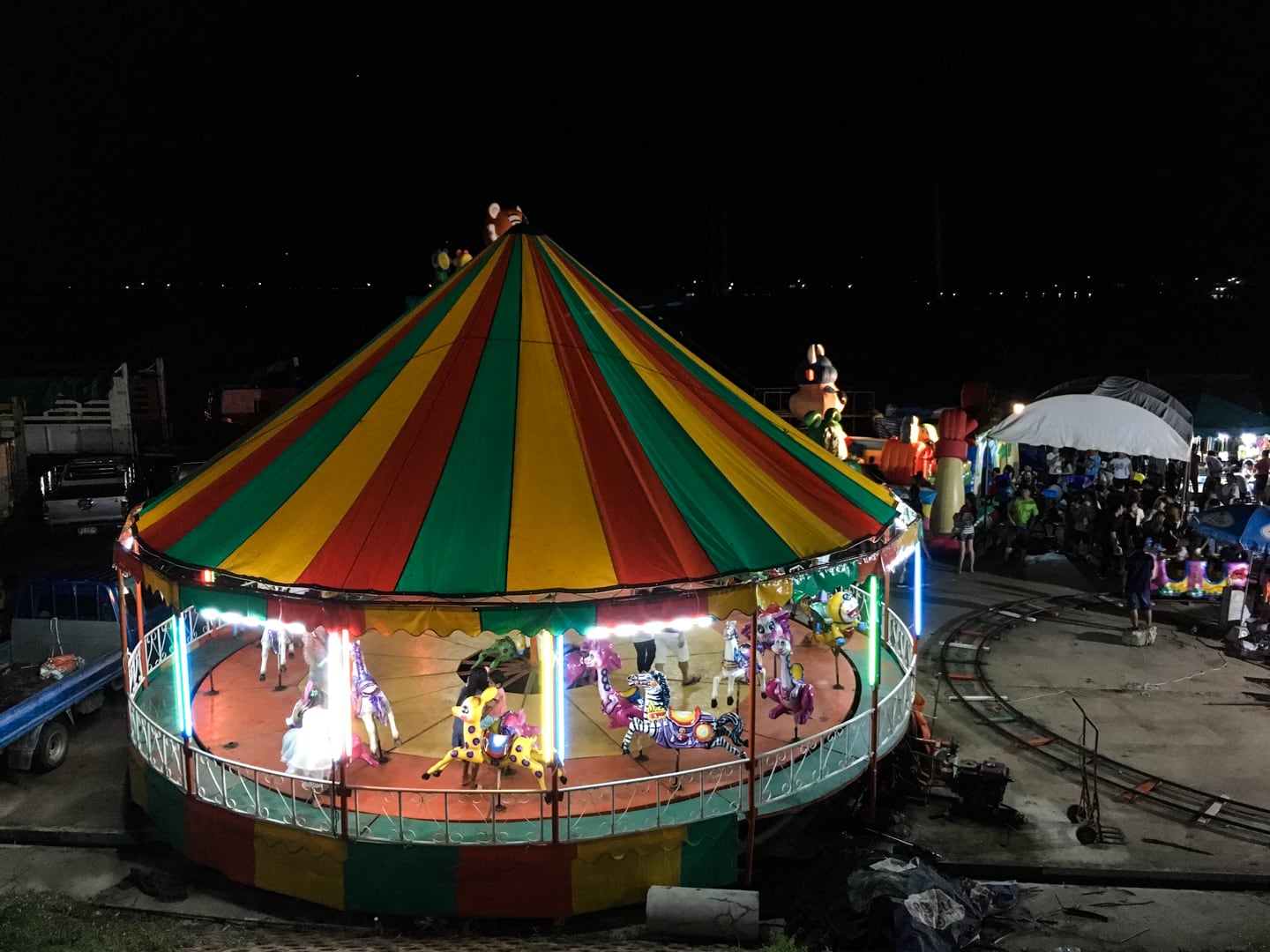
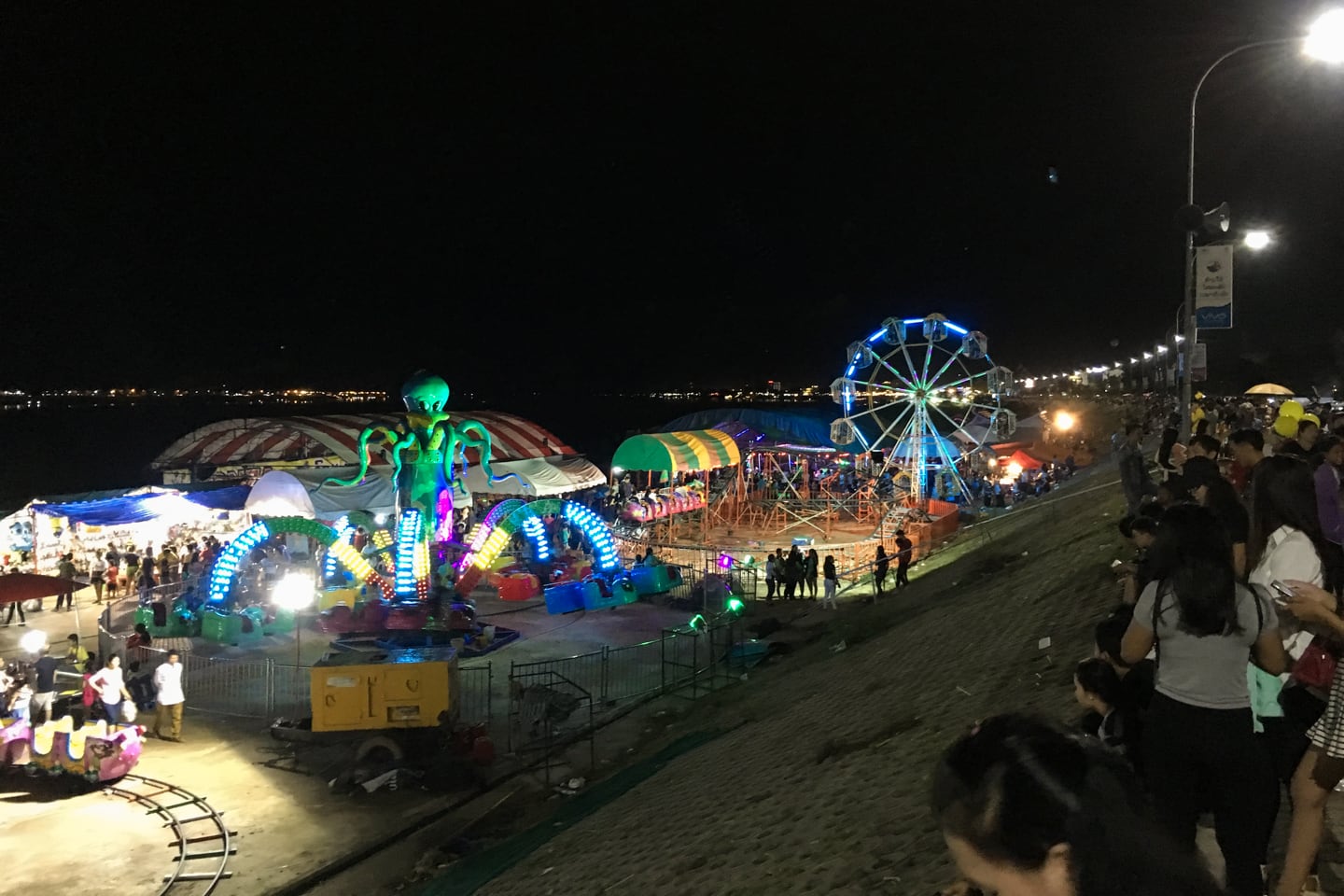
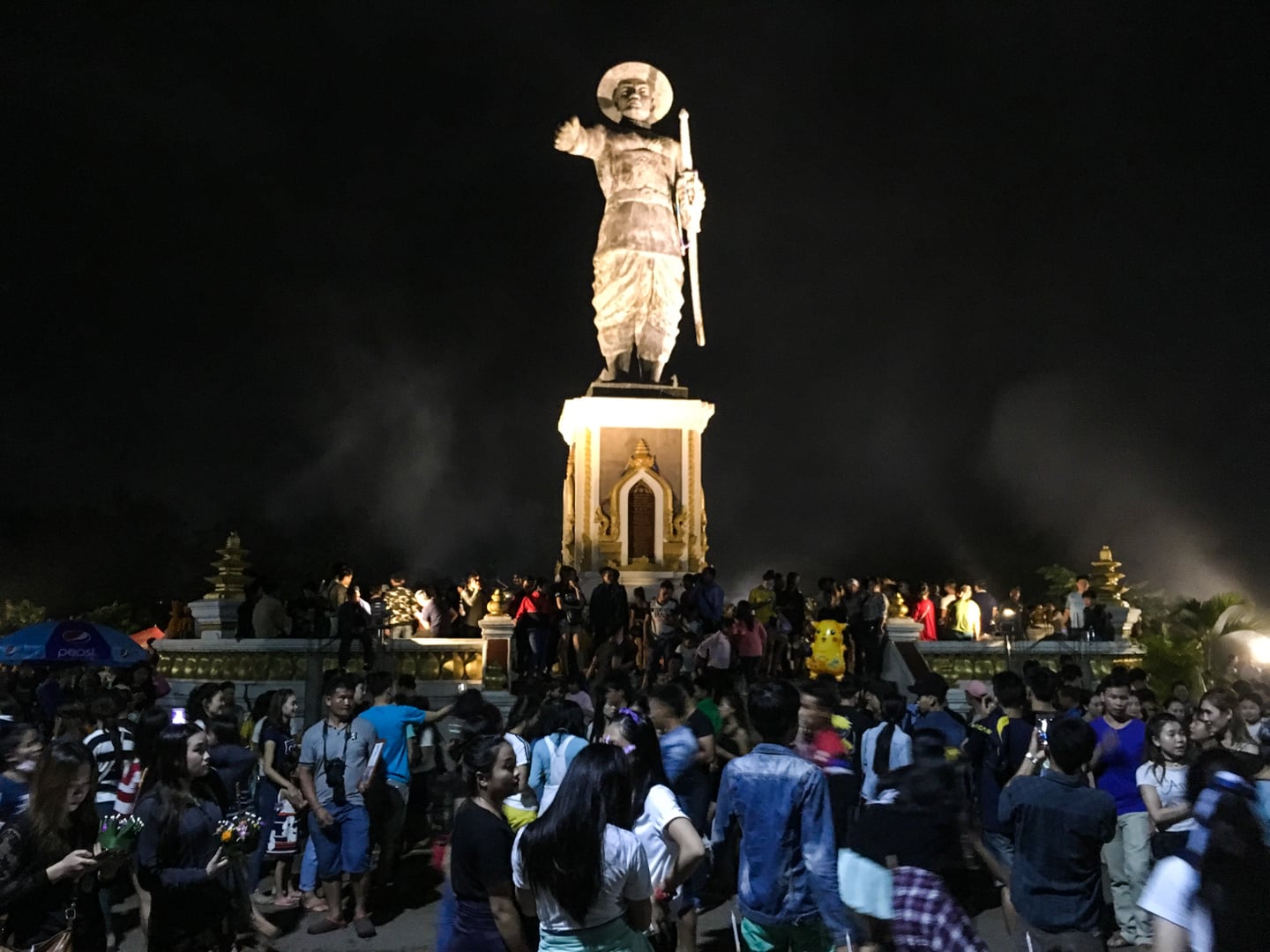
And then, the fireworks start.
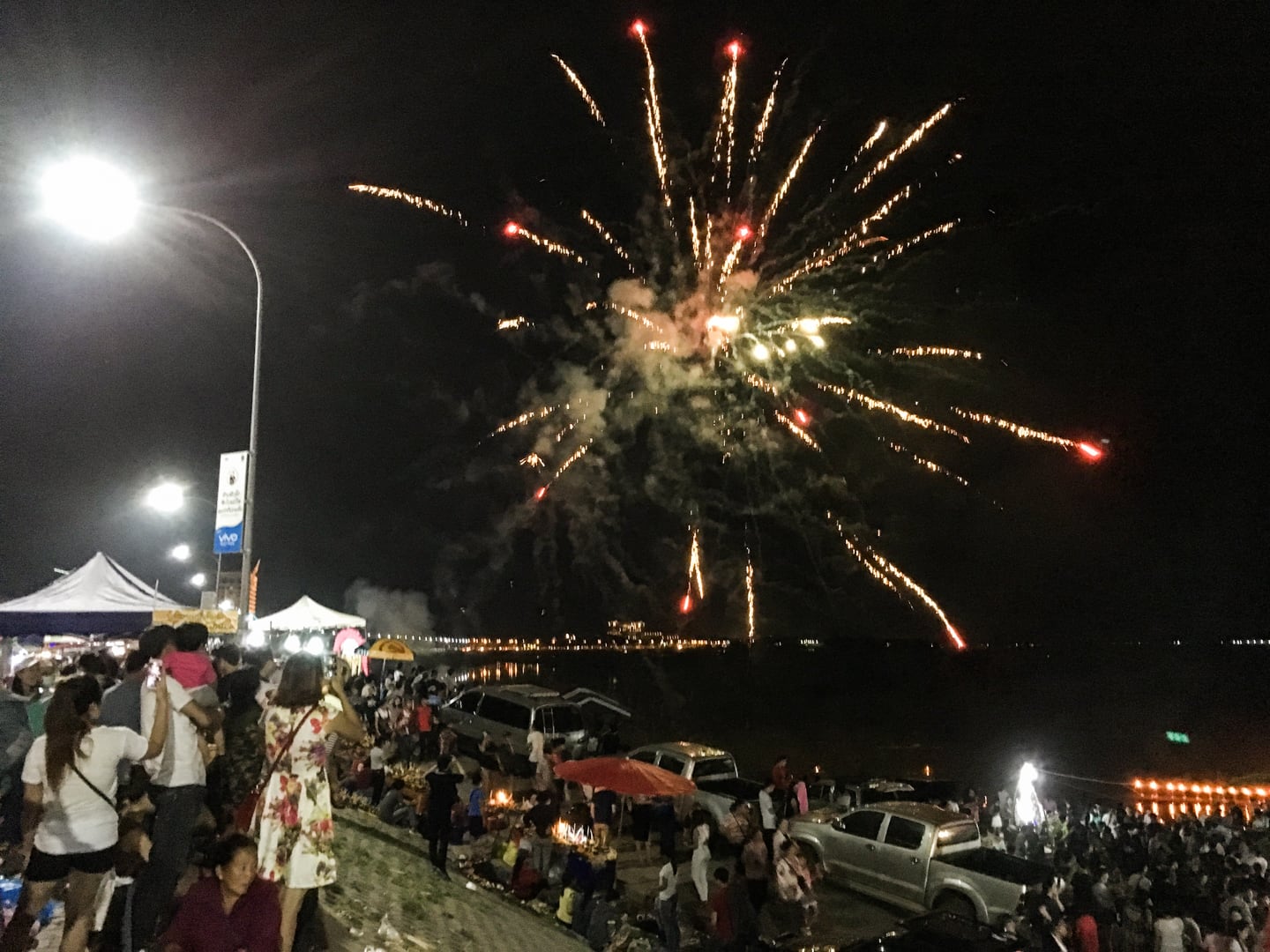
Impressive from our vantage point, largely because they are being launched from just meters away and exploding just meters above the crowd. The deafening BOOM make us cover Noe’s ears and walk a little faster through the area, but no one else seems to mind.
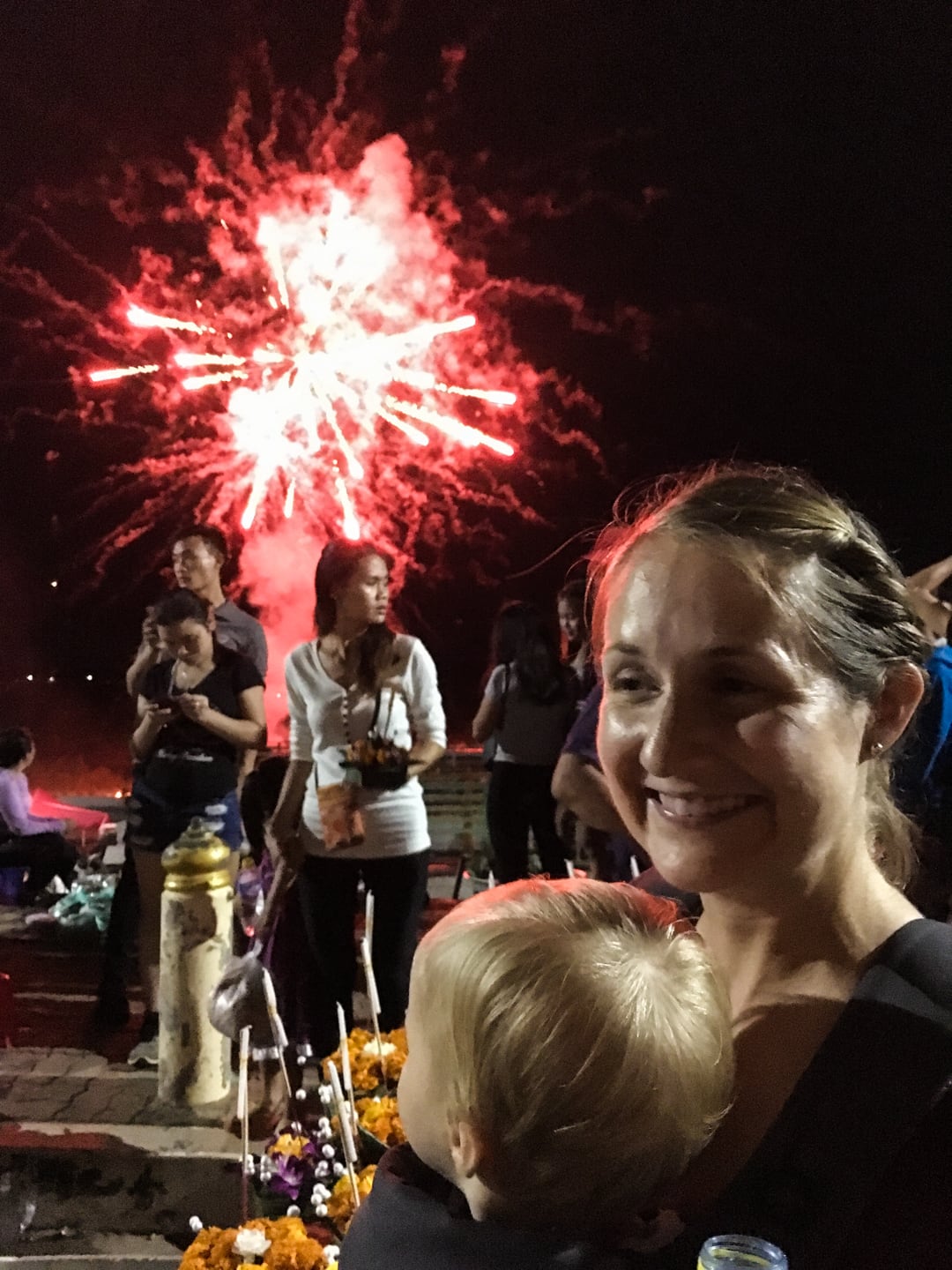
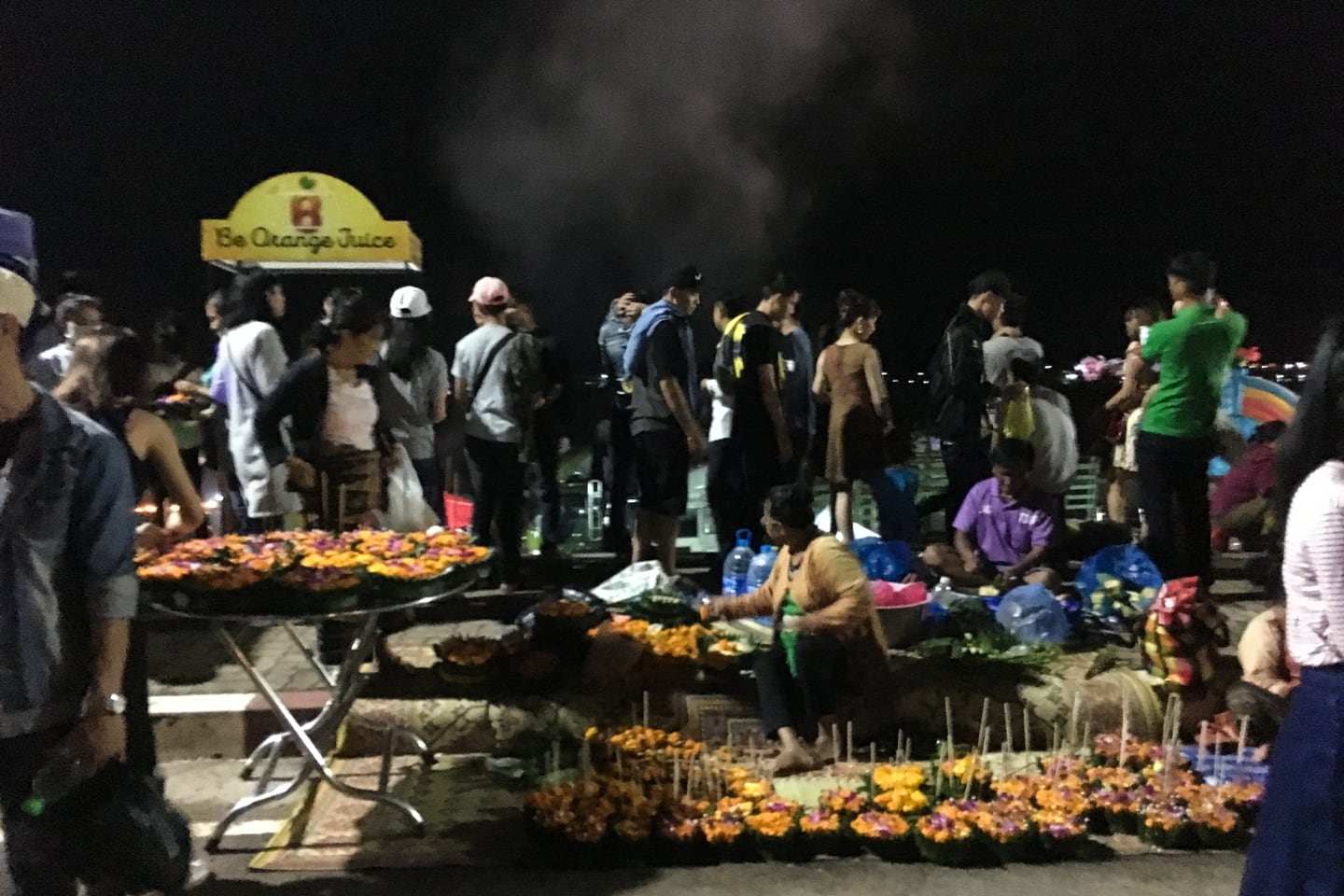
With 8 o’clock fast approaching, it’s time to start making our way back through a sea of people with the complete opposite intention. For most of Vientiane, however, the party is just beginning.
